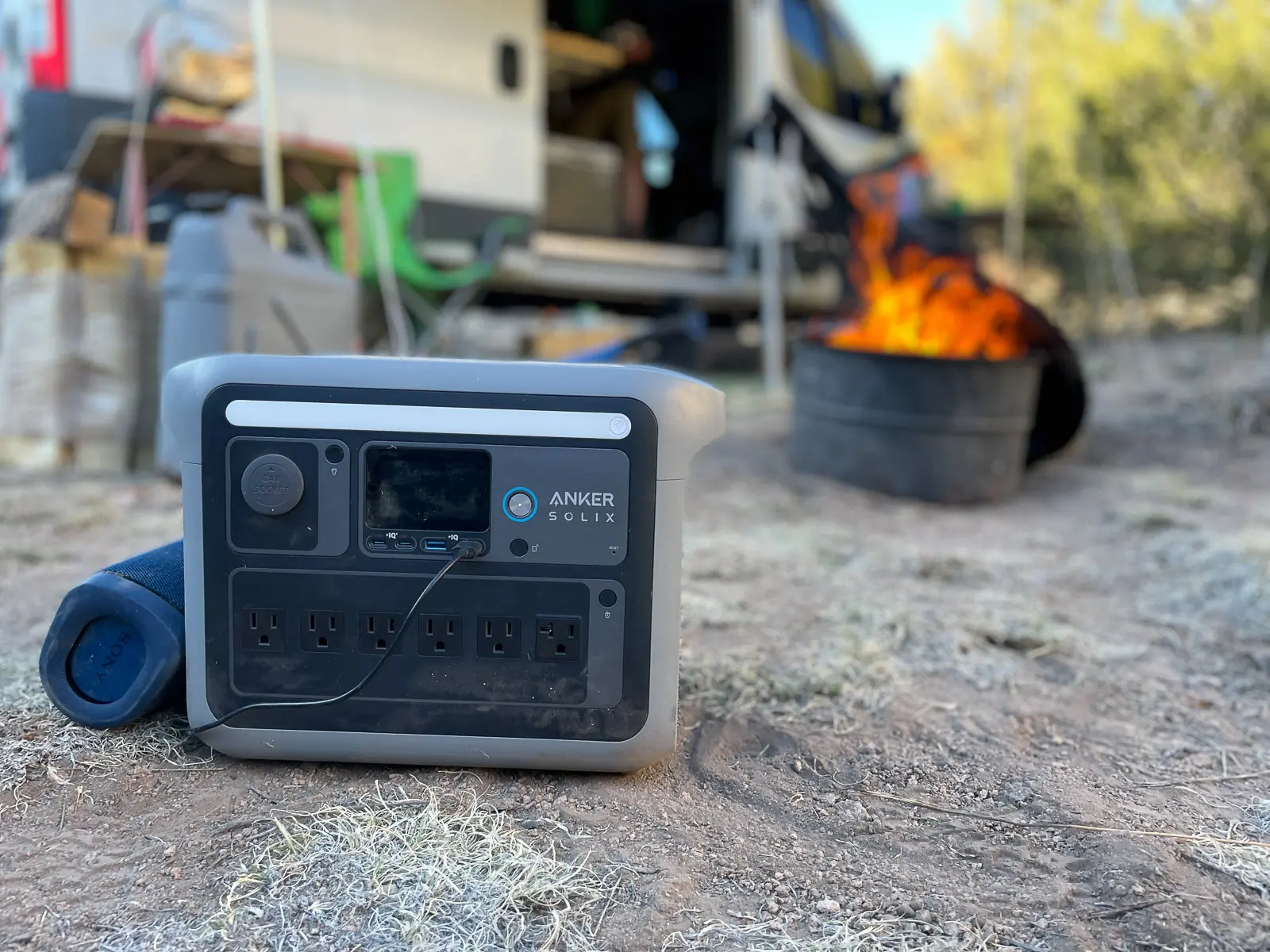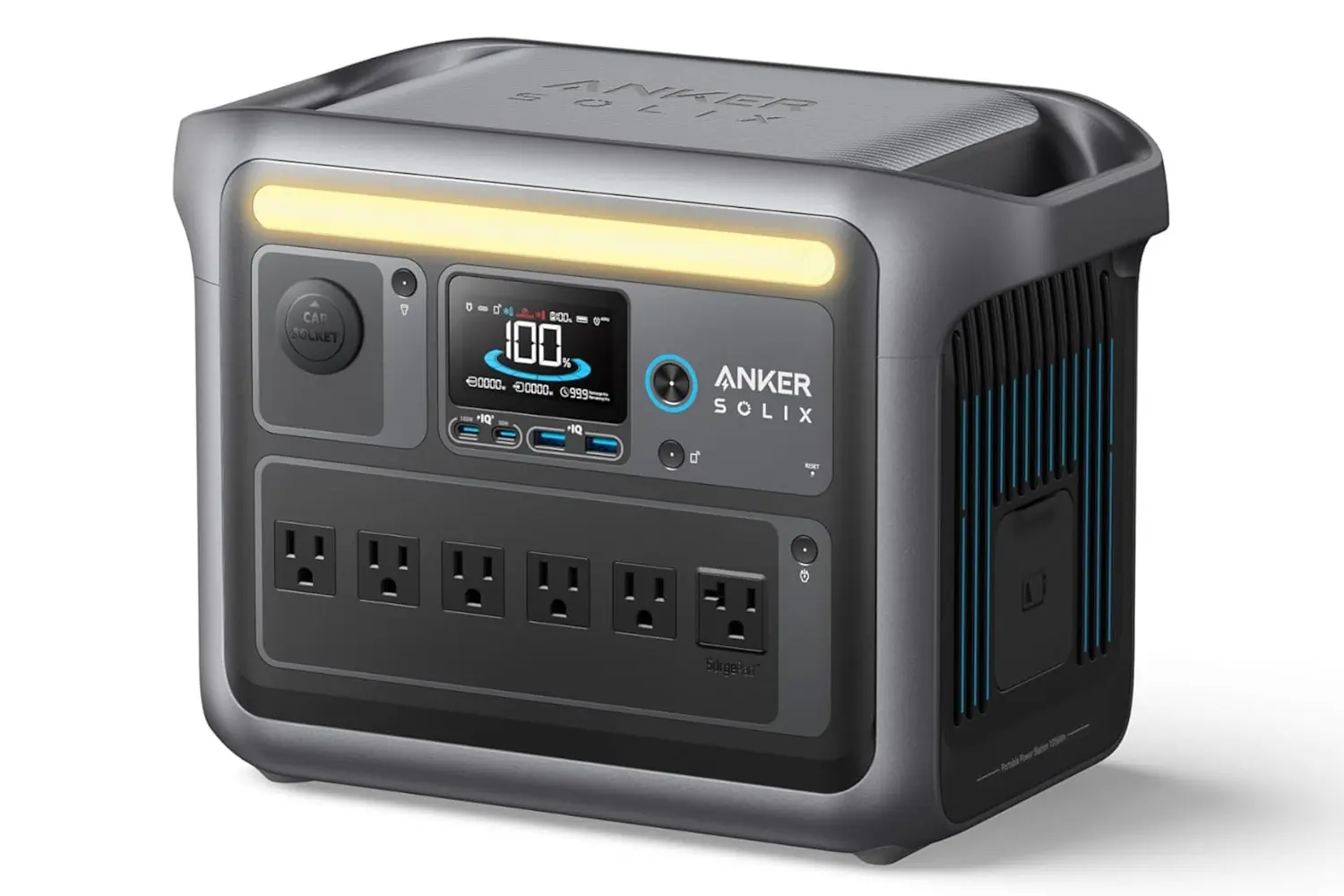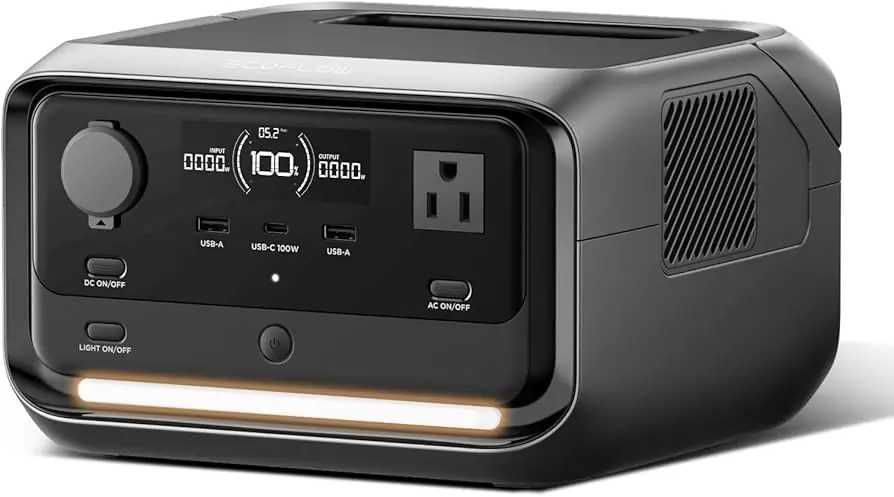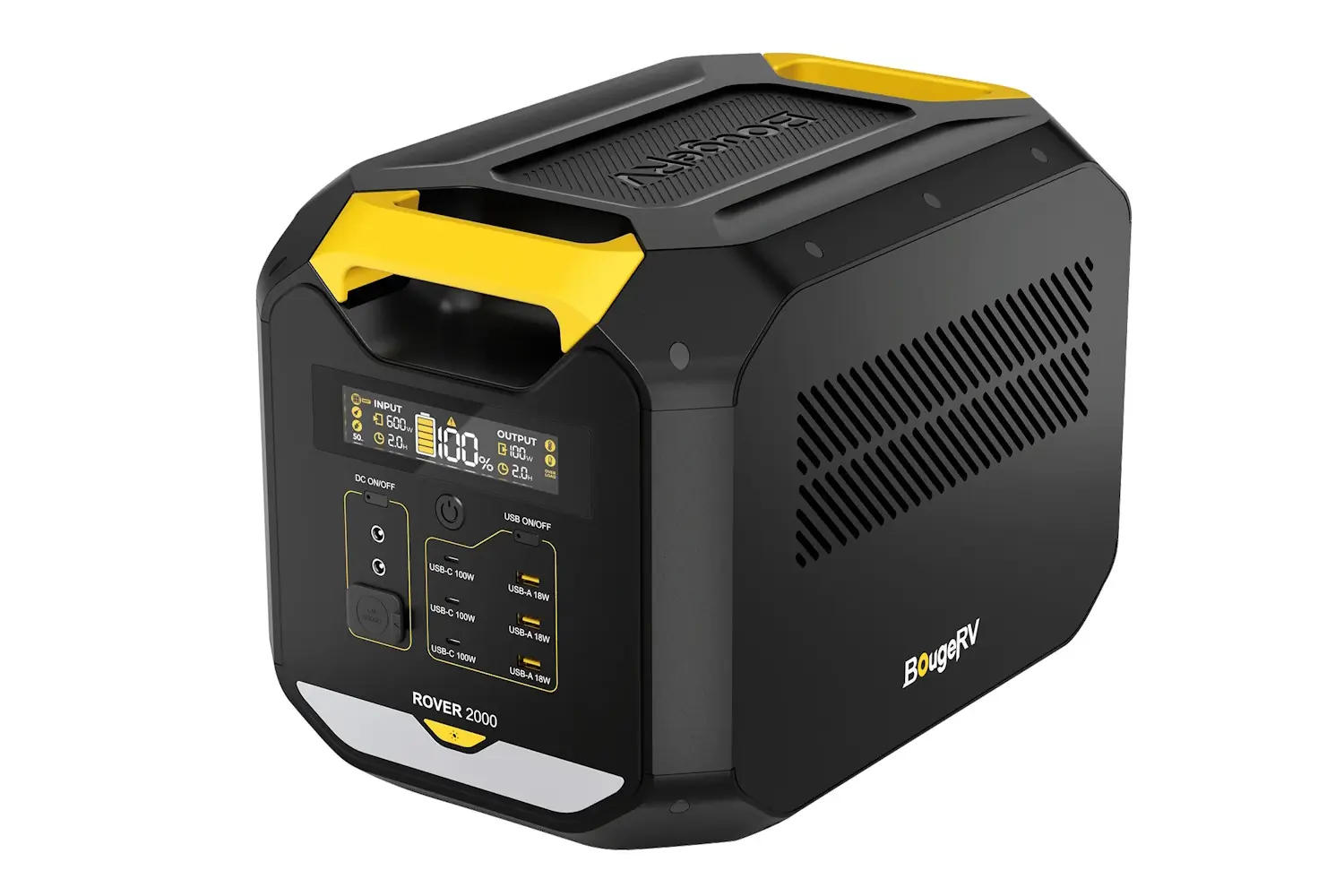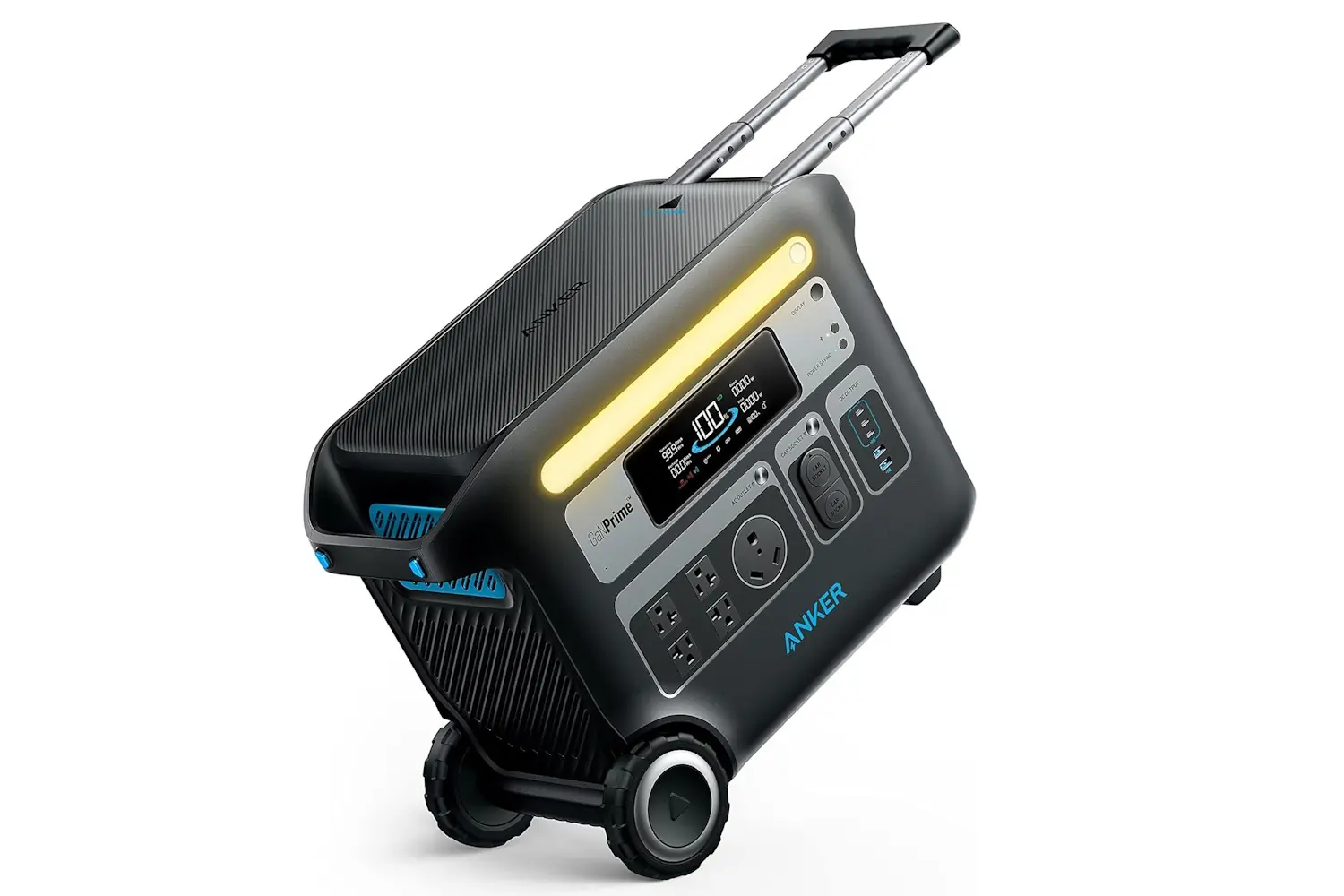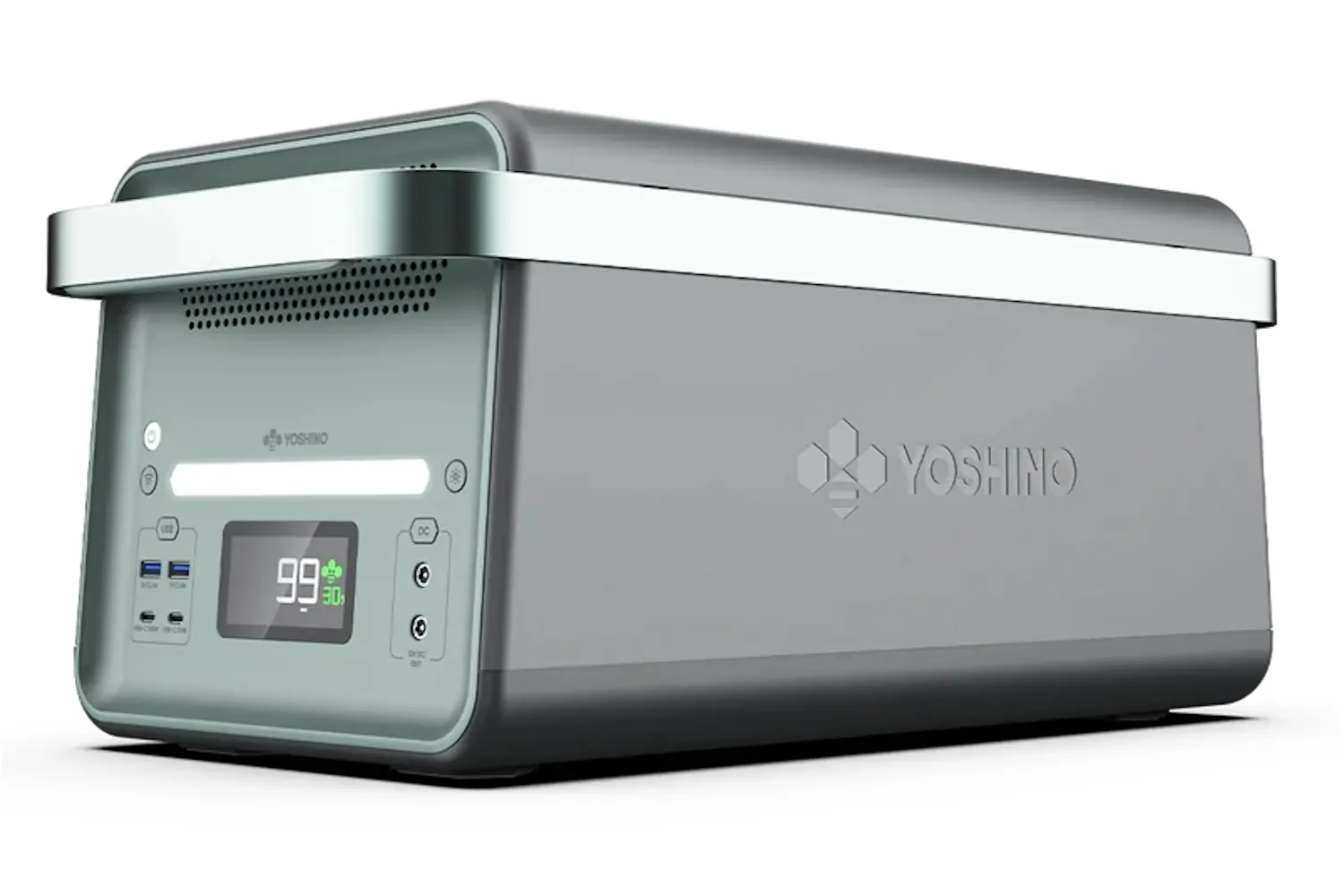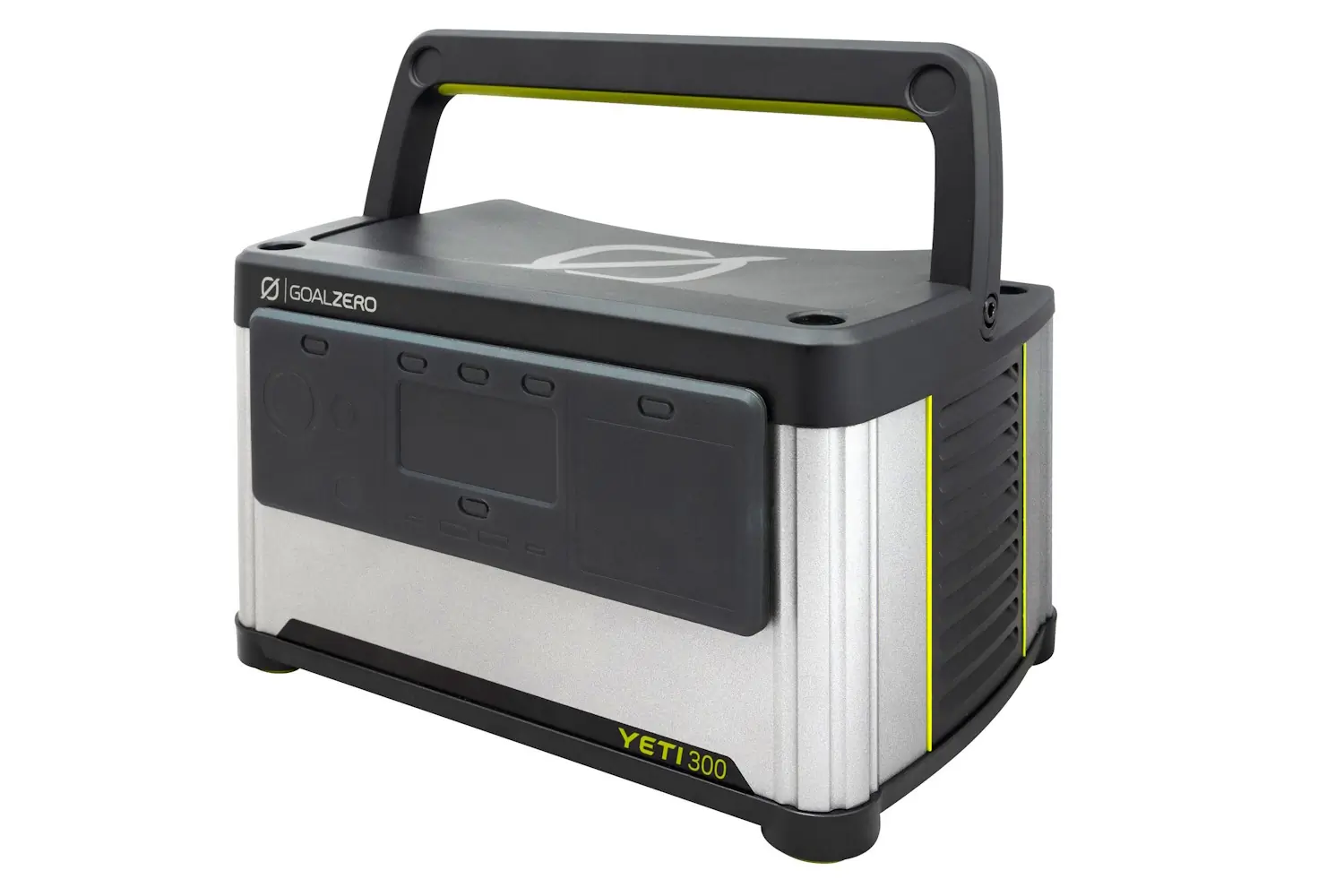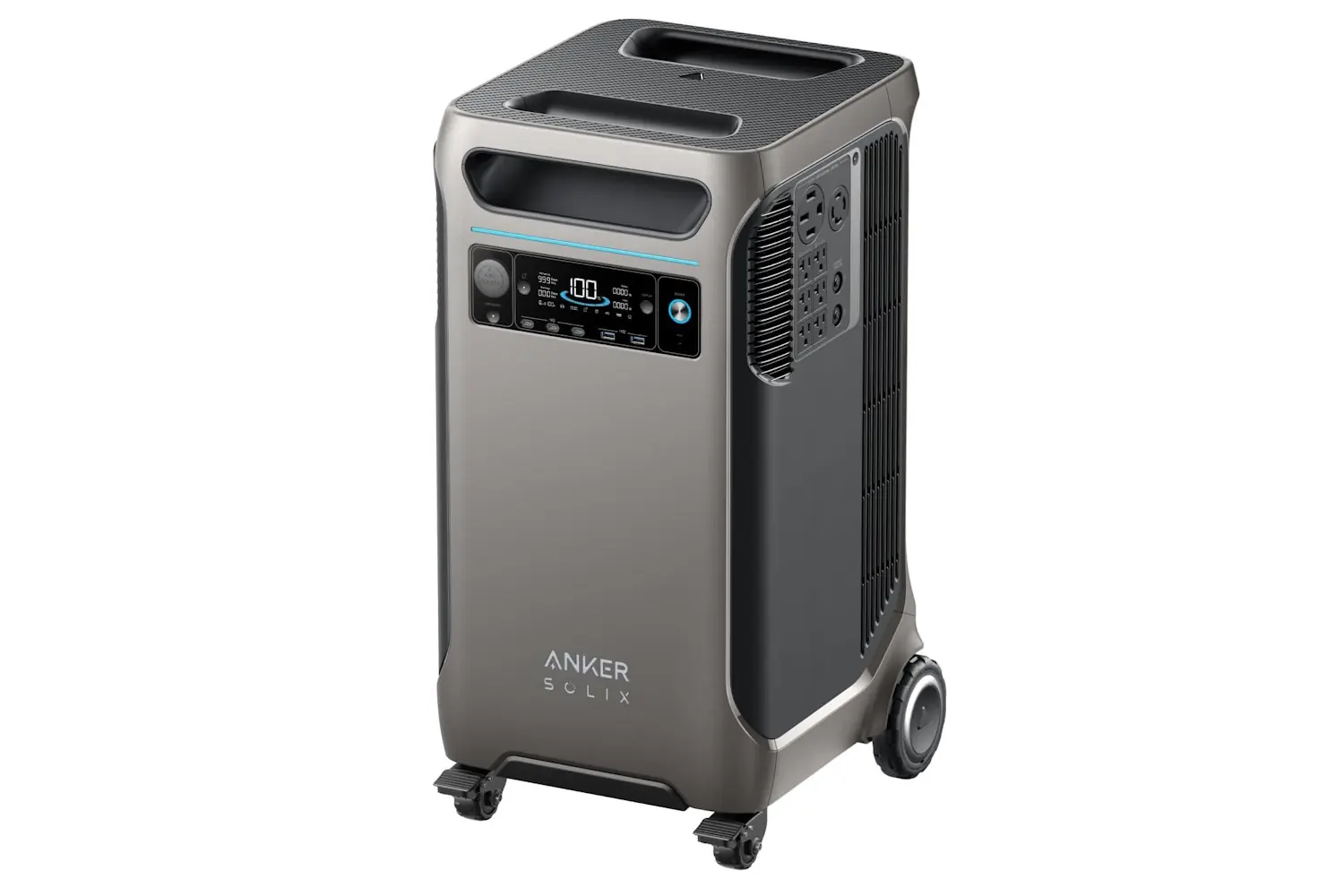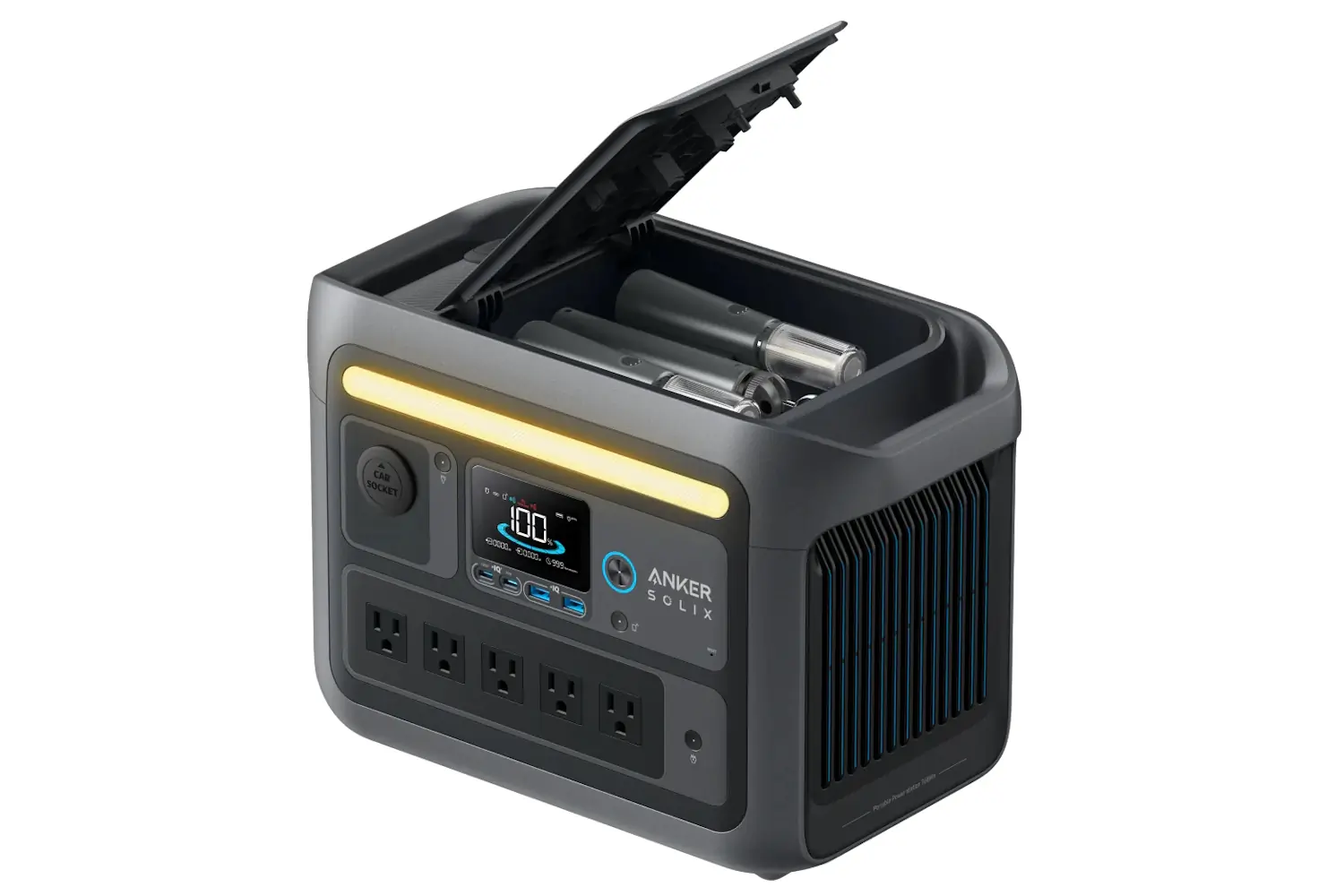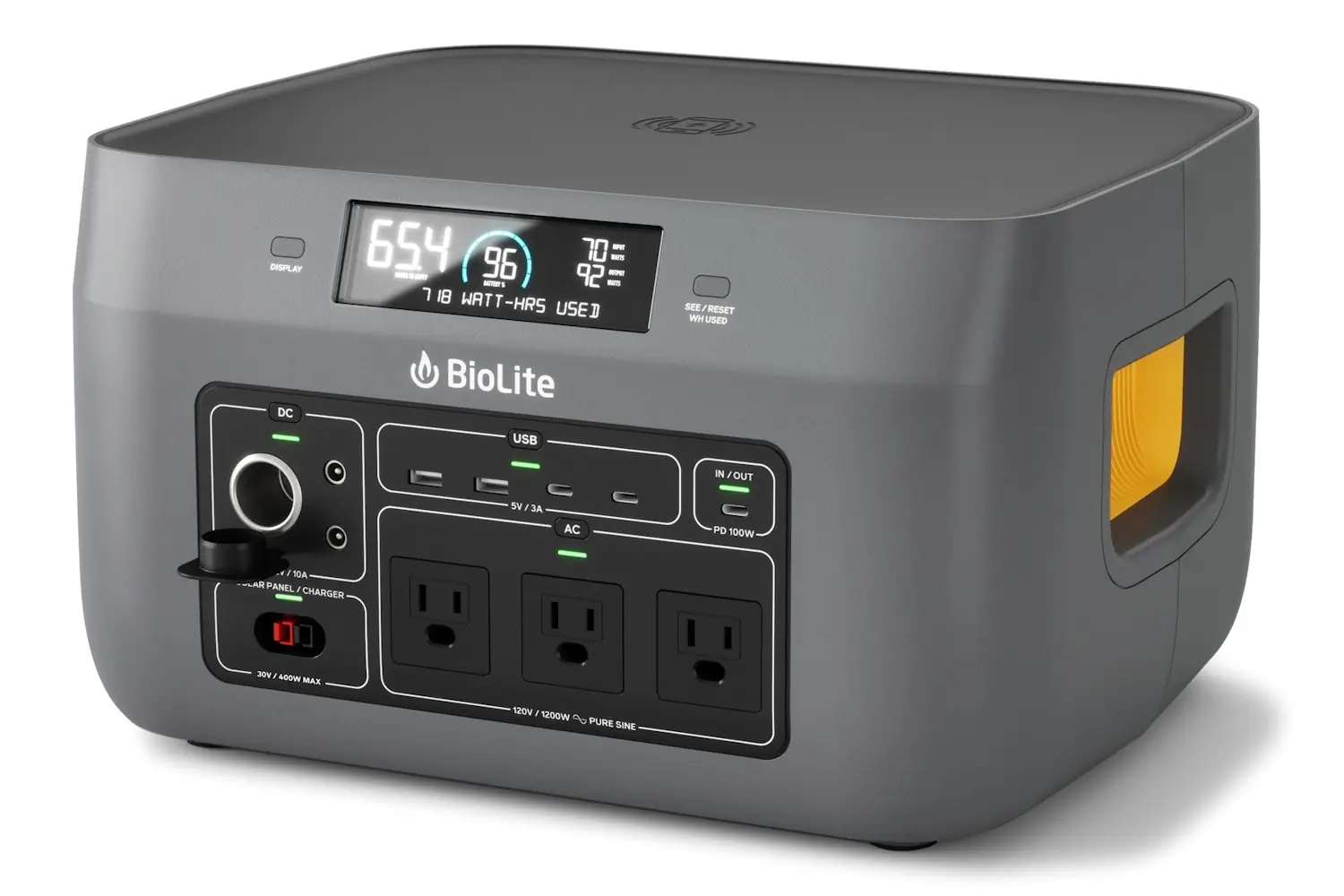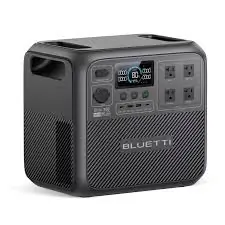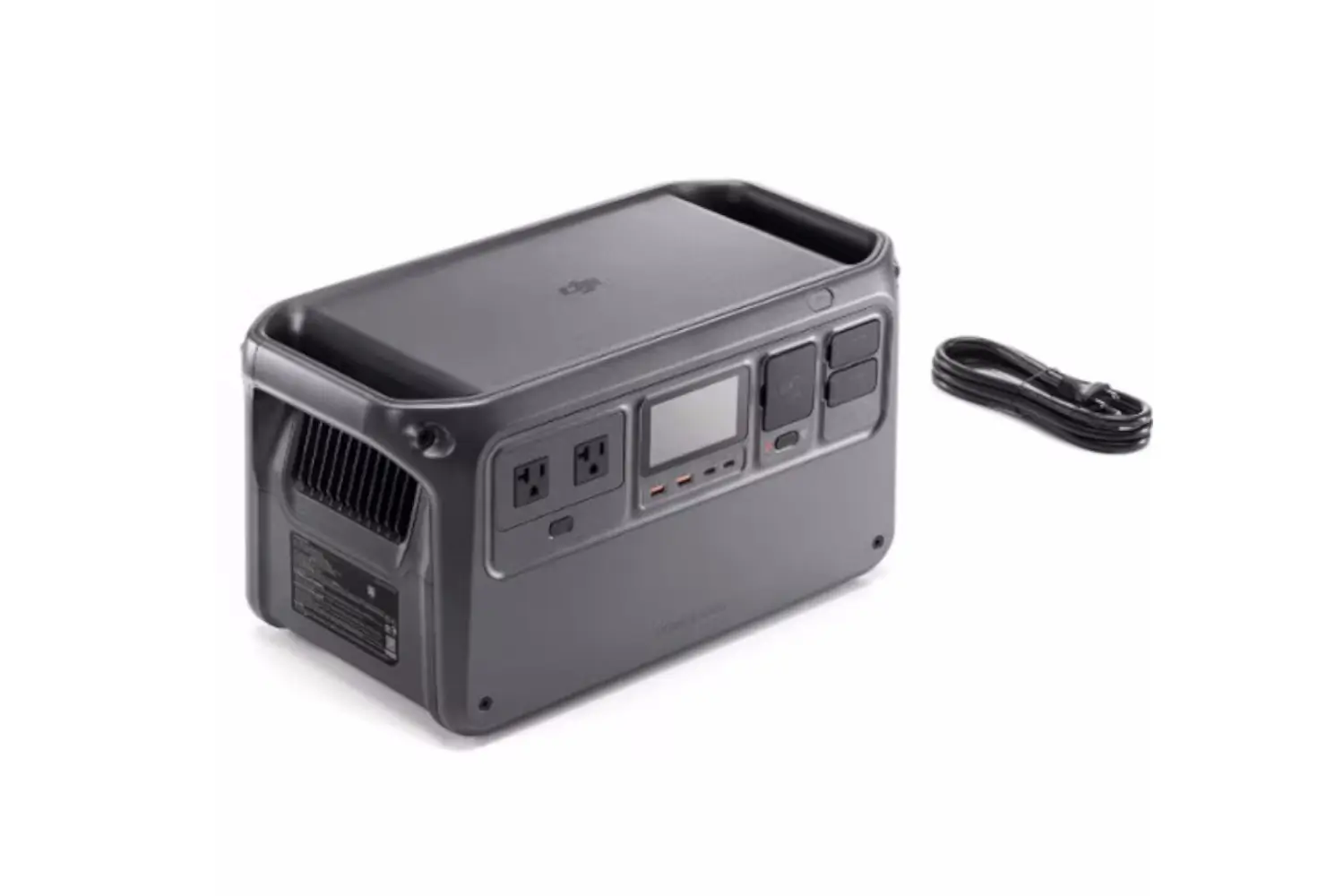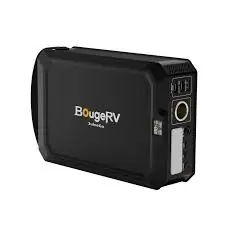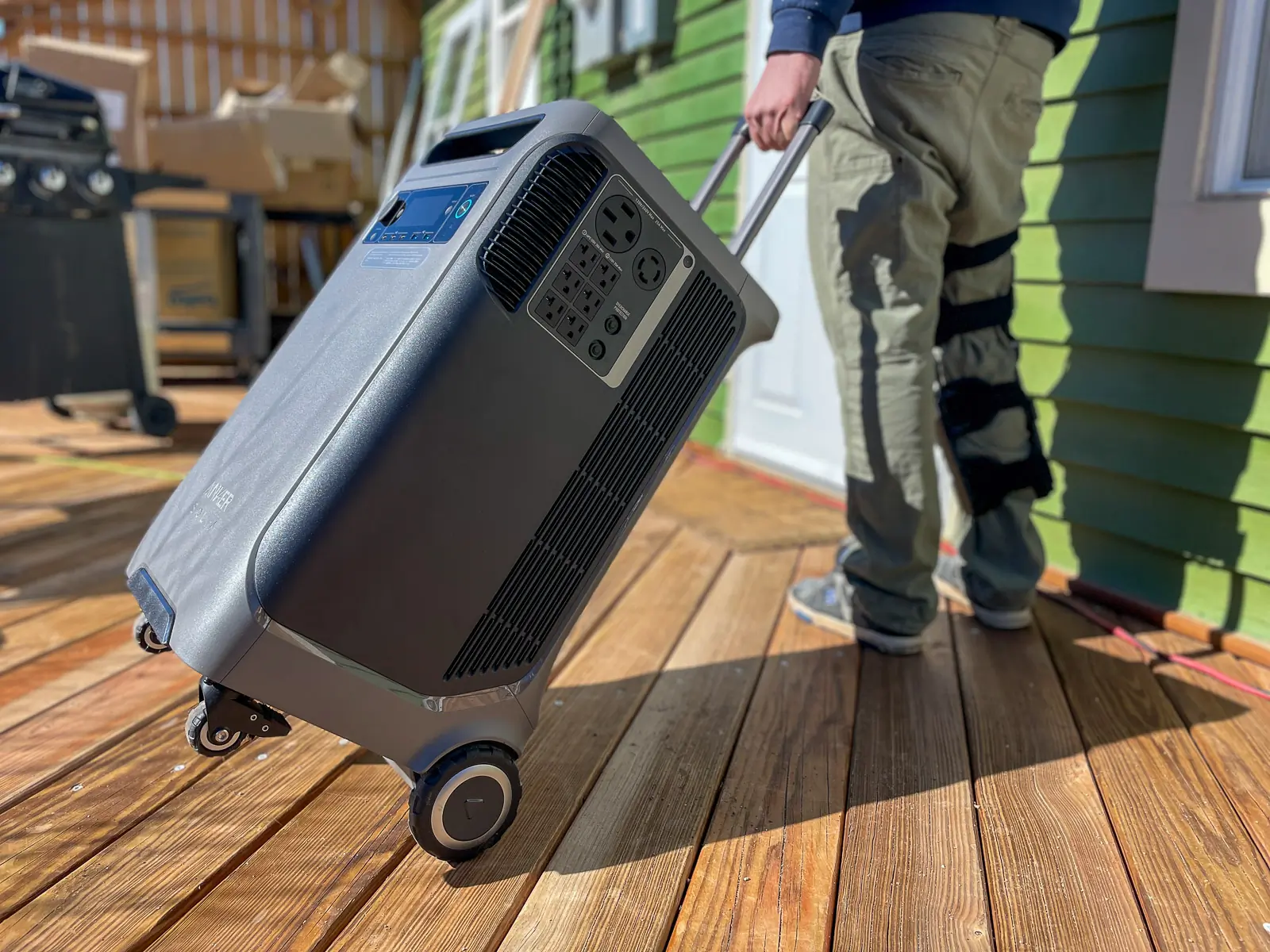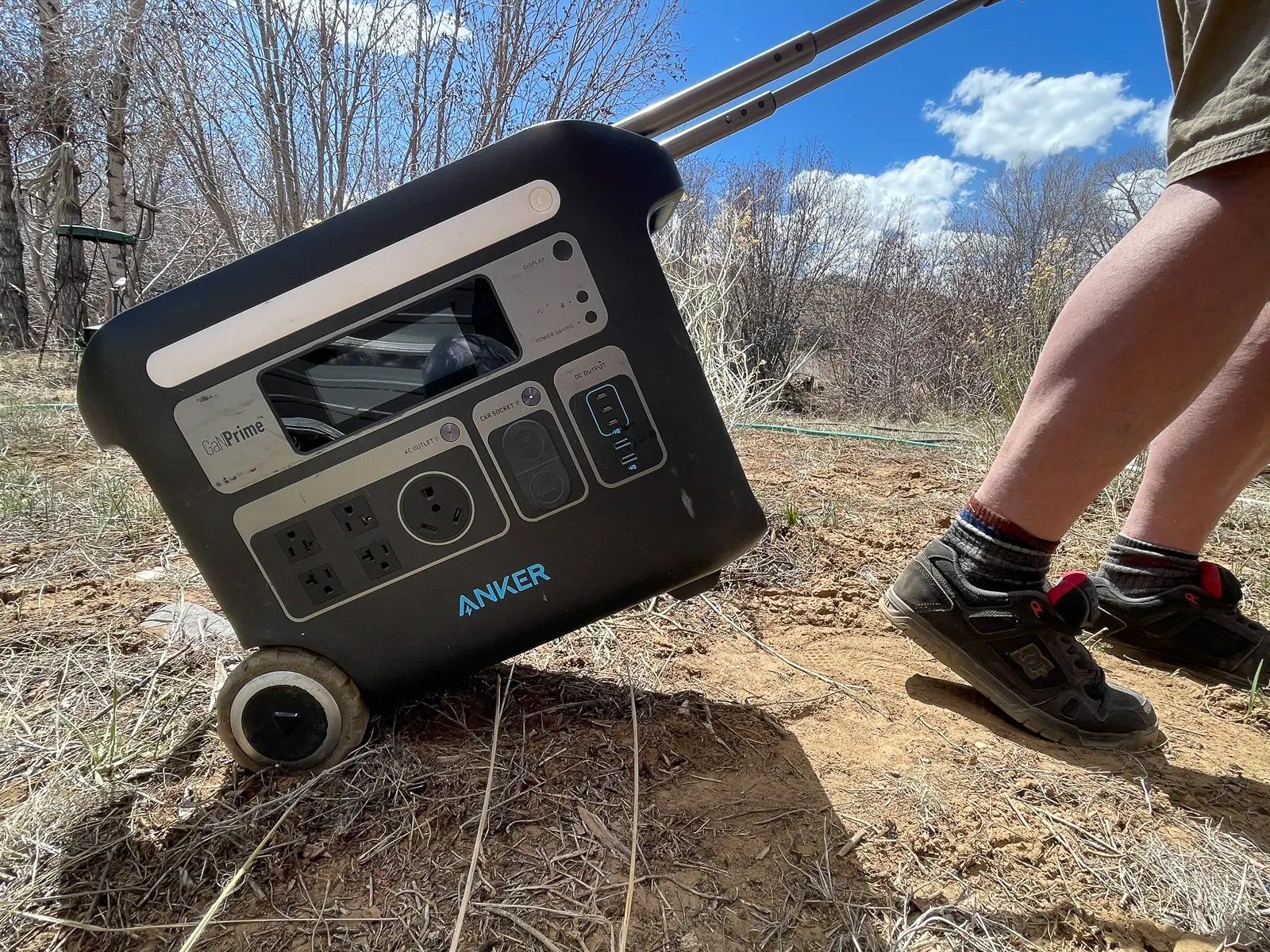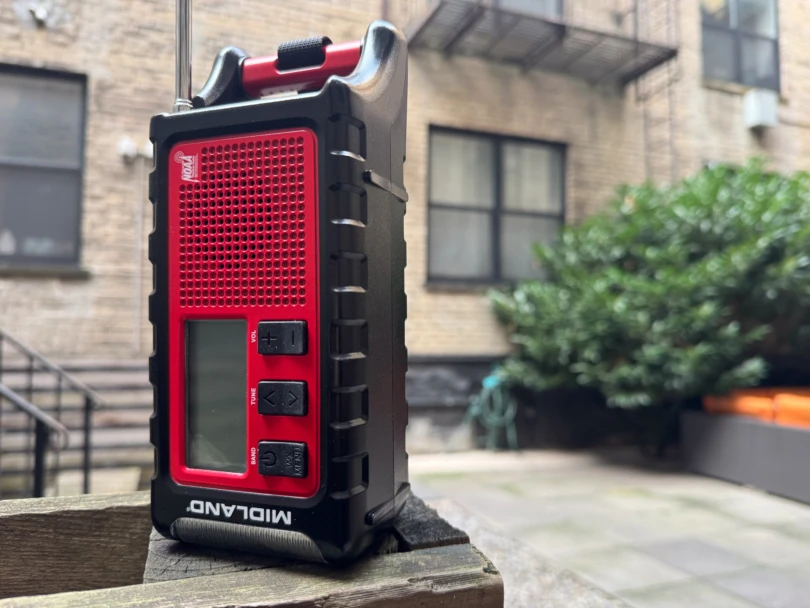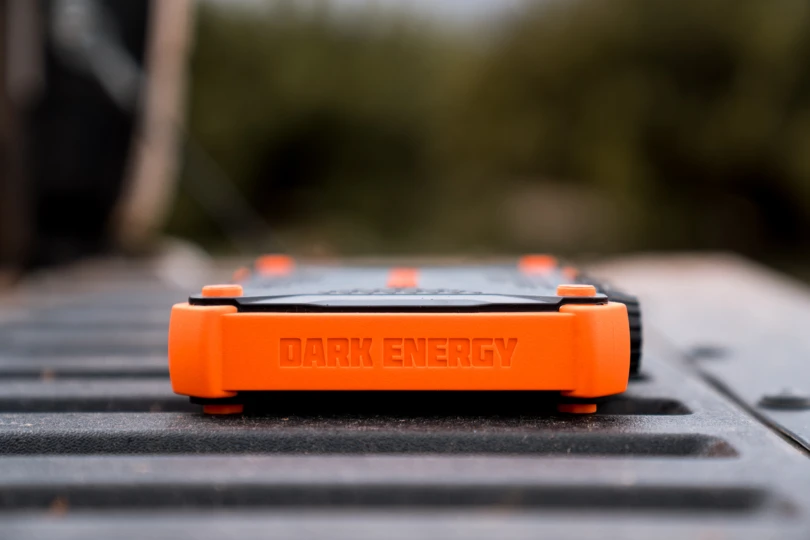Portable power stations have forever squashed the notion of roughing it while camping, road-tripping, beach bumming, and otherwise hanging out or working off the grid. However, choosing the best portable power station for your situation can be confusing. It’s a world fraught with ballyhooed marketing claims and mind-numbing technical mumbo jumbo.
We’re here to help. Over the last few years, we’ve been on a quest to find the best portable power stations. We’ve picked apart the technology to sort hype from fact and tested dozens in the field, from dusty Baja overlanding trails to freezing Colorado nights and humid Florida encampments. We’ve run everything from electric coolers and speakers to welding machines and lawnmowers, then recharged them using solar, wall power, and car lighter sockets.
Here, we’ll walk you through how to do that in this portable power station buying guide, which includes several models that are brand new for 2025, so you can breeze past all of that tech talk to hone in on which one is best for your needs.
Editor’s Note: We updated our Portable Power Stations guide on June 6, 2025, to add the EcoFlow River 3 Plus, our new best budget choice; the Anker C300 DC, our choice for best backpack power station; the workhorse Bluetti Elite 200 V2; Bluetti’s pro-photographer-centric Handsfree 2 Backpack, and the extra-portable Bouge RV JuiceGo.
Top Picks
Anker Solix C1000
- Watt Hours: 1,056, expandable to 2,112
- Output: 1,800 W (2,400 W surge)
- Battery Composition: LiFePO4
- Max Solar/AC Input: 600 W/1,300 W
- Ports: 6 AC, 1 car, 2 USB-A, 2 USB-C
- Dimensions: 14.8” x 8.07” x 10.5”
- Weight: 28 lbs., 7 oz.
Pros
- Fast charging
- Large inverter for its size
- Expandable
- Quality components
Cons
- Expansion battery cable is bulky
EcoFlow River 3 Plus
- Watt Hours: 286
- Output: 600W (1,200W surge)
- Battery Composition: LiFePO4
- Max Solar/AC Input: 220W/380W
- Ports: 3 AC, 1 car, 1 USB-C PD, 2 USB-A
- Dimensions: 9.2” x 9.1” x 5.8”
- Weight: 10 lbs, 6.4 oz.
Pros
- Solar compatible
- Expandable
- Very high output for its size
- UPS capable
- Outstanding price
Cons
- Only light weather resistance
- Could use more USB-C ports
BougeRV Rover2000
- Watt-hours: 2,008, expandable to 8,000
- Output: 2,200 W (4,000 W surge)
- Battery: Semi-solid-state NCM
- Max solar/AC Input: 1,500 W/1,500 W
- Ports: 5 AC, 1 car, 3 USB-A PD, 3 USB-C
- Dimensions: 15.7” x 10.6” x 11”
- Weight: 47 lbs.
Pros
- Highest solar input in class
- Lightweight for its class
- Semi-solid-state battery technology
- Good price
Cons
- Awkward input configuration
- No 30A plug
Anker Solix F2000
- Watt Hours: 2,048, expandable to 4,096
- Output: 2,400 W
- Battery Composition: LiFePO4
- Max Solar/AC Input: 1,000 W/1,440 W
- Ports: 1 30-amp RV, 4 AC, 2 car, 3 USB-C PD, 2 USB-A
- Dimensions: 20.6” x 9.8” x 15.5”
- Weight: 67 lbs., 4.8 oz.
Pros
- Tons of power
- Best wheels and tow handle
- EV-grade battery chemistry
- GaN charging technology
Cons
- Heavier and bulkier than others in its class
Goal Zero Yeti Pro 4000
- Watt Hours: 3,994, expandable to 20 kWh
- Output: 3,600 W (7,200 W surge)
- Battery Composition: LiFePO4
- Max Solar/AC Input: 3,000 W/1,800 W
- Ports: 1 30-amp, 4 AC, 1 car, 1 USB-C PD, 2 USB-C, 3 USB-A
- Dimensions (with cart): 21.4” x 13.8” x 18.1”
- Weight: 115 lbs., 11.2 oz.
Pros
- Fastest solar charging
- Optional van/camper integration kits
- Serious power
- Updated LiFePO4 battery chemistry
Cons
- Wheels don’t do well in dirt
- Heavy to lift
Yoshino Power B4000 SST
- Watt-hours: 2,611 Wh
- Output: 4,000 W (6,000 W surge)
- Battery composition: Solid-state lithium (Solid-state Li-NCM)
- Max solar/AC input: 600 W/1,800 W
- Ports: 1 30A, 2 AC, 1 USB-C PD, 1 USB-C, 2 USB-A
- Dimensions: 21.4” x 10.2” x 9.4”
- Weight: 53 lbs., 9.6 oz.
Pros
- Solid-state battery
- High inverter output
- GaN technology
- Expandable
- Lightweight, stylish
- Wireless phone charging pads
Cons
- Expensive
- No wheels
Anker Solix C300 DC
- Watt Hours: 288
- Output: 300 W
- Battery Composition: LiFePO4
- Max Solar/AC Input: 100W/280W
- Ports: 1 car, 3 USB-C PD, 1 USB-C, 2 USB-A
- Dimensions: 4.9” x 4.7” x 7.9”
- Weight: 6.17 lbs
Pros
- Very light and compact
- Tons of USB-C outlets
- Solar compatible
- Easy to carry
- Nice camp light
Cons
- Sluggish wall charging
- No IP rating
- No AC outlet
Goal Zero Yeti 300
- Watt Hours: 297
- Output: 350 W (600 W surge)
- Battery Composition: LiFePO4
- Max Solar/AC Input: 200 W/420 W
- Ports: 2 AC, 1 car, 1 USB-C PD, 1 USB-C, 2 USB-A
- Dimensions: 11.3” x 7.7” x 6.7”
- Weight: 13 lbs., 11.2 oz.
Pros
- High output for its size
- Water resistant (IX4 standard)
- Fast recharge
- Solar compatible
- Light and portable
Cons
- Weatherproof cover is one piece
- Curve on lid tends to collect dew and spills
- Watt Hours: 3,840, expandable to 26.9kWh
- Output: 6,000 W (surge 9,000 W)
- Battery Composition: LiFePO4
- Max Solar/AC Input: 3,200 W/1,800 W
- Ports: 1 240V, 1 30-amp, EV port, 6 AC, 1 car, 3 USB-C PD, 2 USB-A
- Dimensions: 13” x 14” x 27.5”
- Weight: 137 lbs.
Pros
- Massive inverter
- 240V split-phase outlet, plus EV charging outlet
- Easy to roll about
- Vertical design
- State-of-the-art home integration capabilities
Cons
- Top-heavy
- Heavy for its class
- Watt Hours: 514
- Output: 700W (1200W surge)
- Battery Composition: LiFePO4
- Max Solar/AC Input: 350W/600W
- Ports: 1 AC, 2 USB-C PD, 2 USB-A
- Dimensions: 12” x 4.1” x 15.2”
- Weight: 16.5 lbs.
Pros
- Charge devices while you hike
- Good value
- Comes with camera-centric backpack
- Made for outdoor photographers
- IPX4 waterproof rating
Cons
- No 12V car charging port
- Heavy to carry
- Watt Hours: 748
- Output: 1,200 W (1,600 W surge)
- Battery Composition: LiFePO4
- Max Solar/AC Input: 300 W/1,100 W
- Ports: 5 AC, 1 car, 1 USB-C PD, 1 USB-C, 2 USB-A
- Dimensions: 14.5” x 10” x 8”
- Weight: 24 lbs.
Pros
- Built-in light bar plus lighting accessories
- Large inverter
- Appealing aesthetics
- Burly aluminum unibody design
Cons
- Slightly lacking on solar input
- Bulky grab handle design
- Watt Hours: 1,521
- Output: 1,200 W (2,400 W surge)
- Battery Composition: Lithium Ion NMC
- Max Solar/AC Input: 400 W/400 W
- Ports: 3 AC, 1 car, 1 USB-C PD, 2 USB-C, 2 USB-A
- Dimensions: 14.4” x 12.2” x 8.2”
- Weight: 26 lbs., 8 oz.
Pros
- Lightweight for its class
- Compact design
- Wireless cell phone charging
- Compact solar panels
Cons
- NMC battery technology
- Slow wall charging (AC input)
- 2-year warranty
- Watt Hours: 2073
- Output: 2600W (3,900W surge)
- Battery Composition: NMC, automotive grade
- Max Solar/AC Input: 1,000W/1,800W
- Ports: 4 AC, 2 USB-C PD, 2 USB-A
- Dimensions: 13.8” x 9.8” x 12.7”
- Weight: 53.4 lbs.
Pros
- Excellent value
- Strong inverter
- Ultra compact
- Good solar input
Cons
- Not expandable
- Not IP rated
- Watt Hours: 1,024
- Output: 2,200 W (4,400 surge)
- Battery Composition: LiFePO4
- Max Solar/AC Input: 400W/1,200 W
- Ports: 2 AC, 2 USB-C PD, 2 USB-A, SDC and SDC Lite ports
- Dimensions: 17.6" x 8.8" x 9"
- Weight: 28 lbs., 9.6 oz.
Pros
- Powerful 2,200W inverter for the size
- Hosts 2x USB-C 140W ports
- Recharges DJI drones incredibly quick
- Very quiet during operation
Cons
- Lacks many specialized ports, and instead uses dongles that mate to the SDC ports
- No app support
- Solar input range is only 12-30V
- Watt Hours: 240
- Output: 150W
- Battery Composition: LiFePO4
- Max Solar/AC Input: 100W/100W
- Ports: 1 AC, 1 USB-C PD, 1 USB-C, 1 USB-A
- Dimensions: 10.2” x 6.7” x 2.6”
- Weight: 6.28 lbs.
Pros
- Slim, packable shape
- Good value
- Quality solar panels (add-on)
Cons
- Slow to charge
- Low output
Portable Power Stations Comparison Chart
| Portable Power Station | Price | Watt Hours | Output | Max Solar/AC Input | Weight |
|---|---|---|---|---|---|
| Anker Solix C1000 | $999 | 1,056, expandable to 2,112 | 1,800 W (2,400 W surge) | 600 W/1,300 W | 28 lbs., 7 oz. |
| EcoFlow River 3 Plus | $299 | 286 | 600W (1,200W surge) | 220W/380W | 10 lbs, 6.4 oz. |
| BougeRV Rover2000 | $1,999 | 2,008, expandable to 8,000 | 2,200 W (4,000 W surge) | 1,500 W/1,500 W | 47 lbs. |
| Anker Solix F2000 | $1,999 | 2,048, expandable to 4,096 | 2,400 W | 1,000 W/1,440 W | 67 lbs., 4.8 oz. |
| Goal Zero Yeti Pro 4000 | $3,999 | 3,994, expandable to 20 kWh | 3,600 W (7,200 W surge) | 3,000 W/1,800 W | 115 lbs., 11.2 oz. |
| Anker Solix F3800 Plus | $3,999 | 3,840, expandable to 26.9 kWh | 6,000 W (9,000 W surge) | 2,400 W/1,800 W | 132 lbs. |
| Yoshino Power B4000 SST | $3,299 | 2,611 | 4,000 W (6,000 W surge) | 600 W/1,800 W | 53 lbs., 9.6 oz. |
| Anker Solix C300 DC | $249 | 288 | 300 W | 100 W/280 W | 6.17 lbs |
| Goal Zero Yeti 300 | $299 | 297 | 350 W (600 W surge) | 200 W/420 W | 13 lbs., 11.2 oz. |
| Anker Solix F3800 Plus | $4,799 | 3,840, expandable to 26.9k Wh | 6,000 W (surge 9,000 W) | 3,200 W/1,800 W | 137 lbs. |
| Bluetti Handsfree 2 Backpack Power Station | $599 | 514 | 700W (1200W surge) | 350W/600W | 16.5 lbs. |
| Biolite BaseCharge 1500 | $1,359 | 1,521 | 1,200 W (2,400 W surge) | 400 W/100W | 26 lbs., 8 oz. |
| Bluetti Elite 200 V2 | $1,699 | 2073 | 2600W (3,900W surge) | 1,000W/1,800W | 53.4 lbs. |
| DJI Power 1000 | $999 | 1,024 | 2,200 W (4,400 surge) | 400W/1,200 W | 28 lbs., 9.6 oz. |
| BougeRV JuiceGo | $209 | 240 | 150W | 100W/100W | 6.28 lbs. |
How We Tested the Best Portable Power Stations
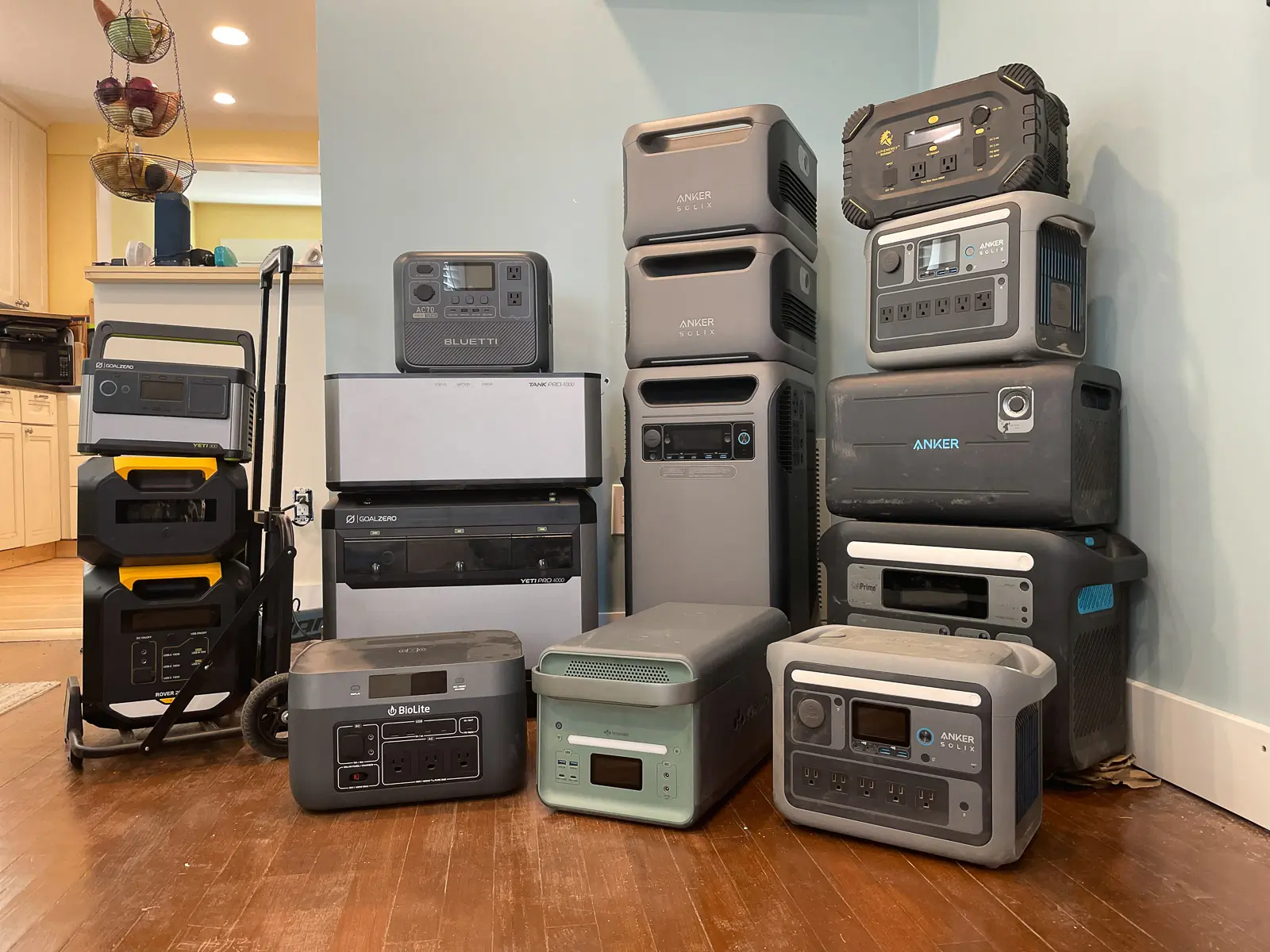
While the term ‘power-hungry’ might not be the most apt to describe the GearJunkie team, we do require a good bit of off-grid juice to keep our exploits running down the trail, and have been early adopters of portable power stations for years now. In that time, we’ve self-powered ourselves for weeks at a time, living off-grid in our vans, hunkering down in elk camps, and generally keeping the lights on during our long-term testing.
It’s mind-blowingly awesome that you can carry around a box of electricity, and we’re stoked to share this comprehensive guide of what we’ve learned to help you navigate a complex technology that is too often prone to misleading and murky manufacturer claims.
This guide represents 15 of the best power stations we’ve tested to date, including seven models new to the market in the last year. For each, we scored them on battery and inverter capacity, price, composition, max solar and AC input, dimensions, weight, expandability, and more. And because portable power station tech is advancing so rapidly, we’ll keep testing and updating this guide as the days, miles, and starlit campsite nights roll by.
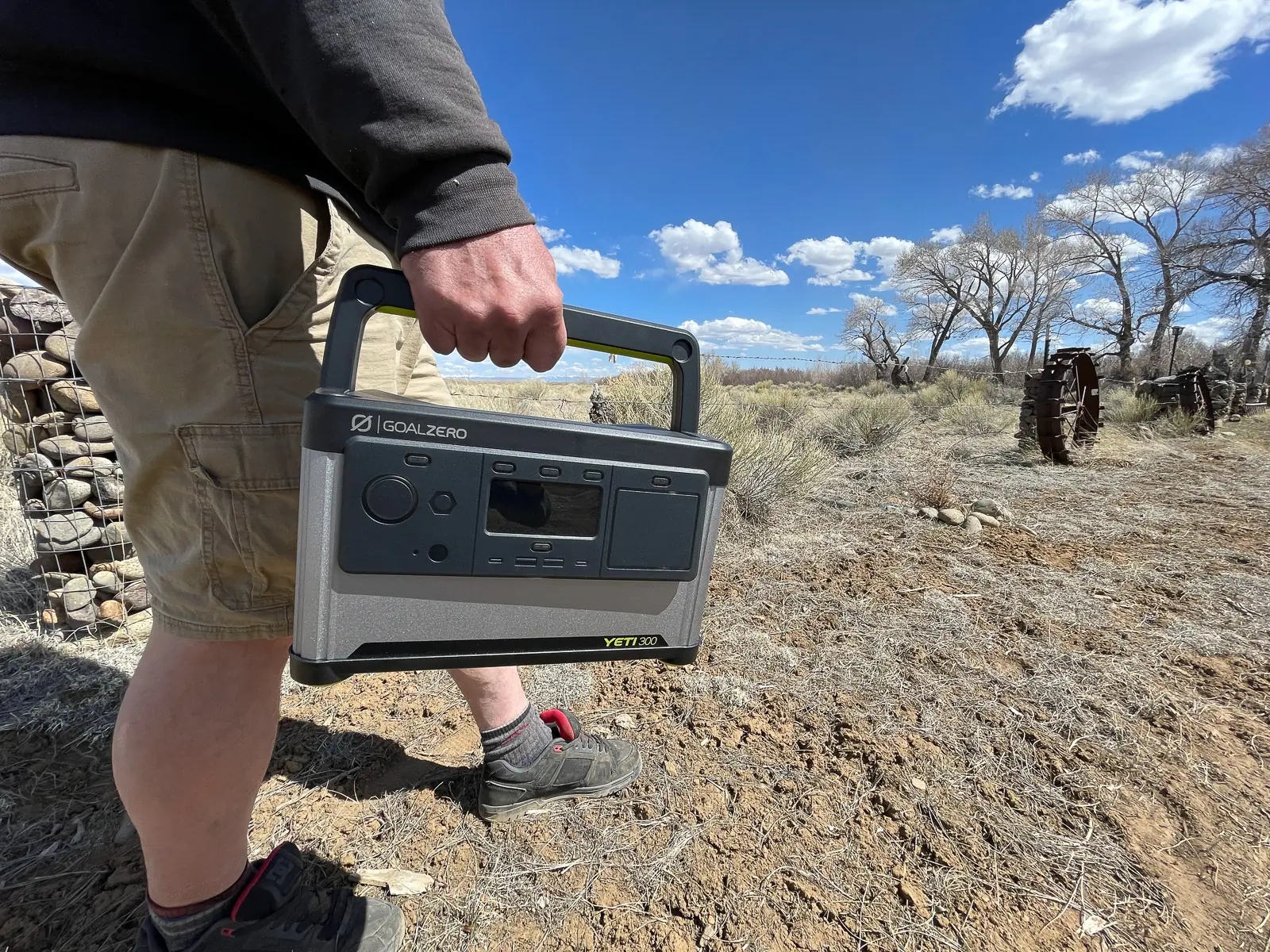



Field Testing
For testing, we drained these portable power stations down with size-appropriate devices (think electric coolers, power tools, lawnmowers, portable air conditioners, speakers, laptops, drones, and shower pumps), then charged them back up to evaluate their ease of use, actual charging speed, fan noise, solar panel accessories, and various quirks.
We also tested their durability and portability, switching out which ones accompanied us along tens of thousands of road miles and dozens of campsites, from the tip of Baja through the Colorado high country, Utah deserts, Montana forests, then all the way down through the Florida Keys. They’ve been tossed about on rocky back roads, exposed to gnarly dust storms, and unintentionally left out in the elements.
We collected experiential data from other power station enthusiasts who use theirs for tasks we haven’t tried, like running CPAP machines, RVs, and home backup systems. Beyond physical testing, we also delved into battery composition and other technologies to understand the scientific aspects of how the wizard works behind the curtains. That further helped us narrow down our top picks, plus uncovered a few shady manufacturer performance claims.
Bench Testing
Our bench testing is where the true nerding out happens, and we break out the multimeters to ground-truth manufacturer claims in a controlled environment. This includes charge and discharge times, but also important metrics such as size and weight — essentials for outdoor-ready power stations.
Our stress-testing is no gimmie, either, and for this, we break out the real power-hungry appliances. Blenders and microwaves work well, but to really squeeze these stations, we employ 1,200W home air conditioning units and hobbyist welders to see how far these stations will run. These are some of the most demanding uses these power stations can face, with tripped breakers being common in lower-powered inverters.
Why You Should Trust Us
Contributor Karuna Eberl leads our efforts in portable power station testing and started a deep dive into portable power a few years ago after installing a solar system in her van. She and her partner were instantly spoiled, so when it came time for an overlanding trip, Karuna had to find power for tent-camping excursions as well. That spurred an epic journey of unraveling and testing power station technology.
Our testing team is also flush with GearJunkie experts who use power stations to keep their mobile offices humming and outdoor kits fully powered up. Editorial Director Sean McCoy most often relies on portable power to juice his remote elk camps in the alpine of Colorado, but he also uses smaller options to keep his laptop running at the park. Editor Seiji Ishii frequently escapes to the hills in his van, where he’s fully off-grid and relying on remote power to keep his fridge (and lights) on.
We put power stations in multiple hands to ensure that all user angles are covered — everyone has different needs, and we want to get the full picture.
Buyer’s Guide: How to Choose a Portable Power Station
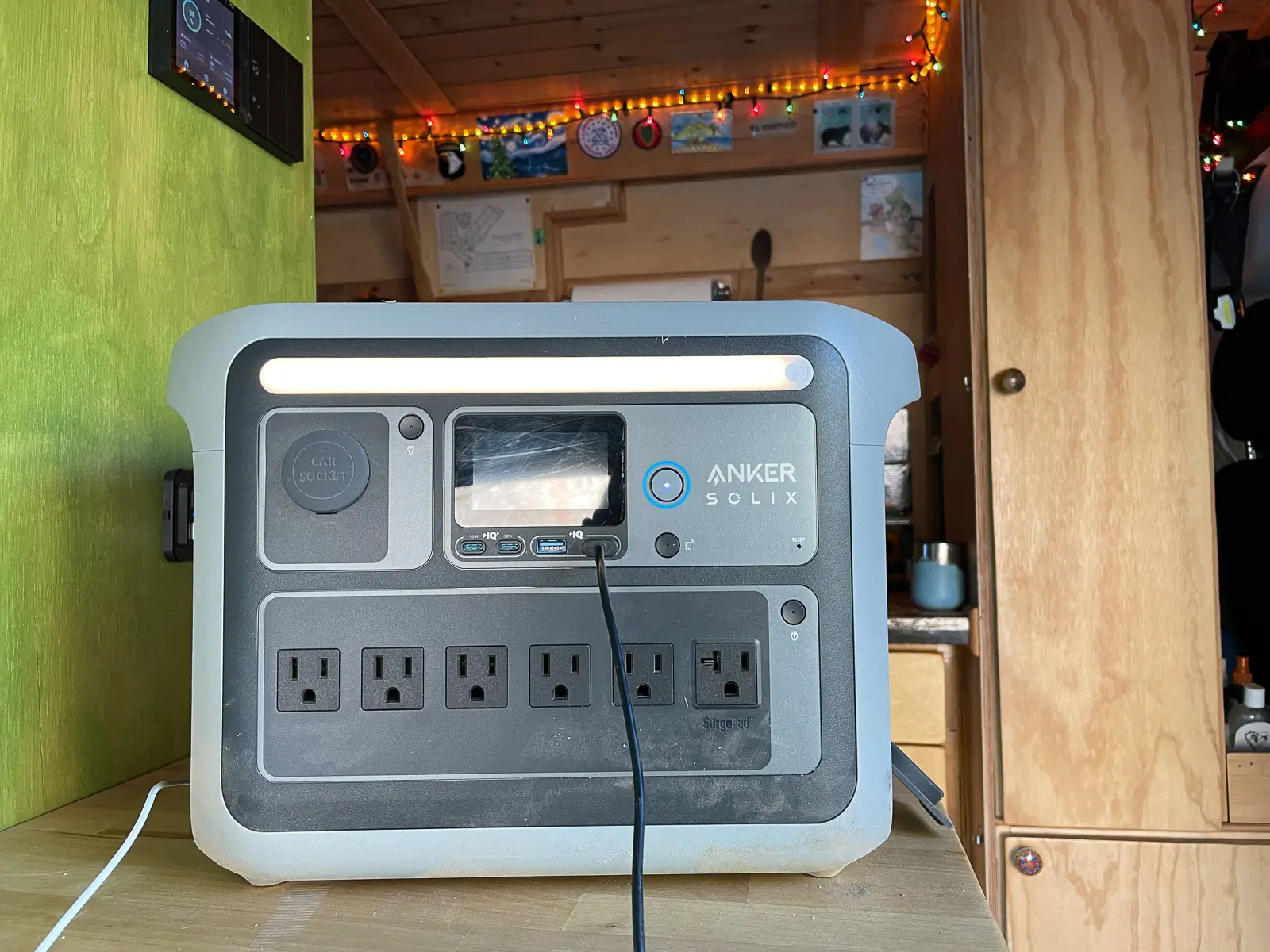



Power stations are basically big batteries neatly packaged in a housing along with a solar charge controller, an inverter, a DC circuit, an AC charger (for recharging it through household receptacles), and garnished with various outlets for plugging in electric devices. They are primarily classified by their capacity in watt-hours (Wh), but depending on what you want to use them for, there are other important features to consider as well.
While portable power has been around for a while, it’s only in the last five or so years that it’s really come into its own, thanks to leaps in lithium battery and inverter technology. In the last year, we’ve watched some of them evolve rapidly while also coming down in price.
The power station industry is also pretty cutthroat, and we liken it to the electric bicycle market. More off-brands are jumping in the game, with some repackaged straight from sources overseas. Some are quality, but others are opaque about performance. If you don’t see specs like battery chemistry and charging rates on the website, be wary because it probably means they’re hiding something.
Capacity (Watt-Hours)
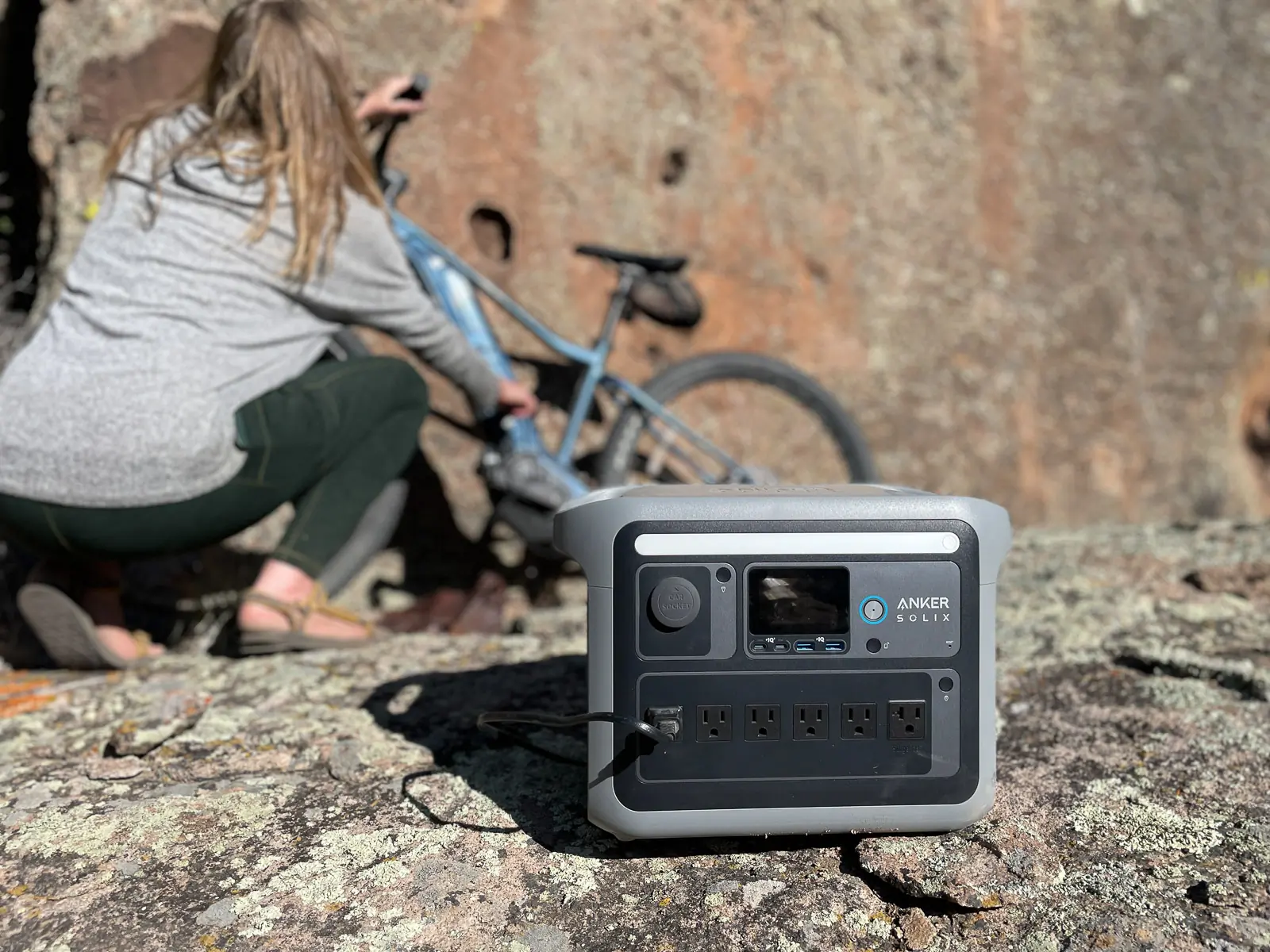



The first task when choosing a power station is to calculate how much stored power you need. Most brands measure those capacities in watt-hours (Wh), which means a power station containing 100 Wh of energy can put out 100 watts for one hour, or 10 watts for 10 hours.
On the small end, portable power stations hold around 300 Wh (like the little EcoFlow River 3 Plus, our Best Budget pick). These little ones are generally smaller than a lunchbox and good for tasks like recharging laptops and speakers, LED lighting, and small fans. On the high-capacity end, portable power stations top out at around 4,000 Wh plus are expandable with extra batteries. Anker’s Solix F3800 Plus mushrooms up to nearly 53,000 Wh (30 kWh) and can run pretty much anything, including air conditioners and washing machines.
To figure out what size you need, start by making a list of everything you might want to run or charge and add up how many watt-hours each uses. For example, if your smartphone holds 10 Wh, a 100Wh power station can charge it from empty around 10 times. Or, if your Keurig coffeemaker uses 900 W, a 1,000Wh power station can run it for almost an hour if it were running continuously.
Since the Keurig only runs for 5 minutes at a time, however, it makes more sense to calculate its power usage by the number of cups of coffee you can make with 1000 Wh, which in this case would be 20 or so. Similarly, if you’re calculating for an electric cooler, remember its compressor won’t be running 100% of the time.
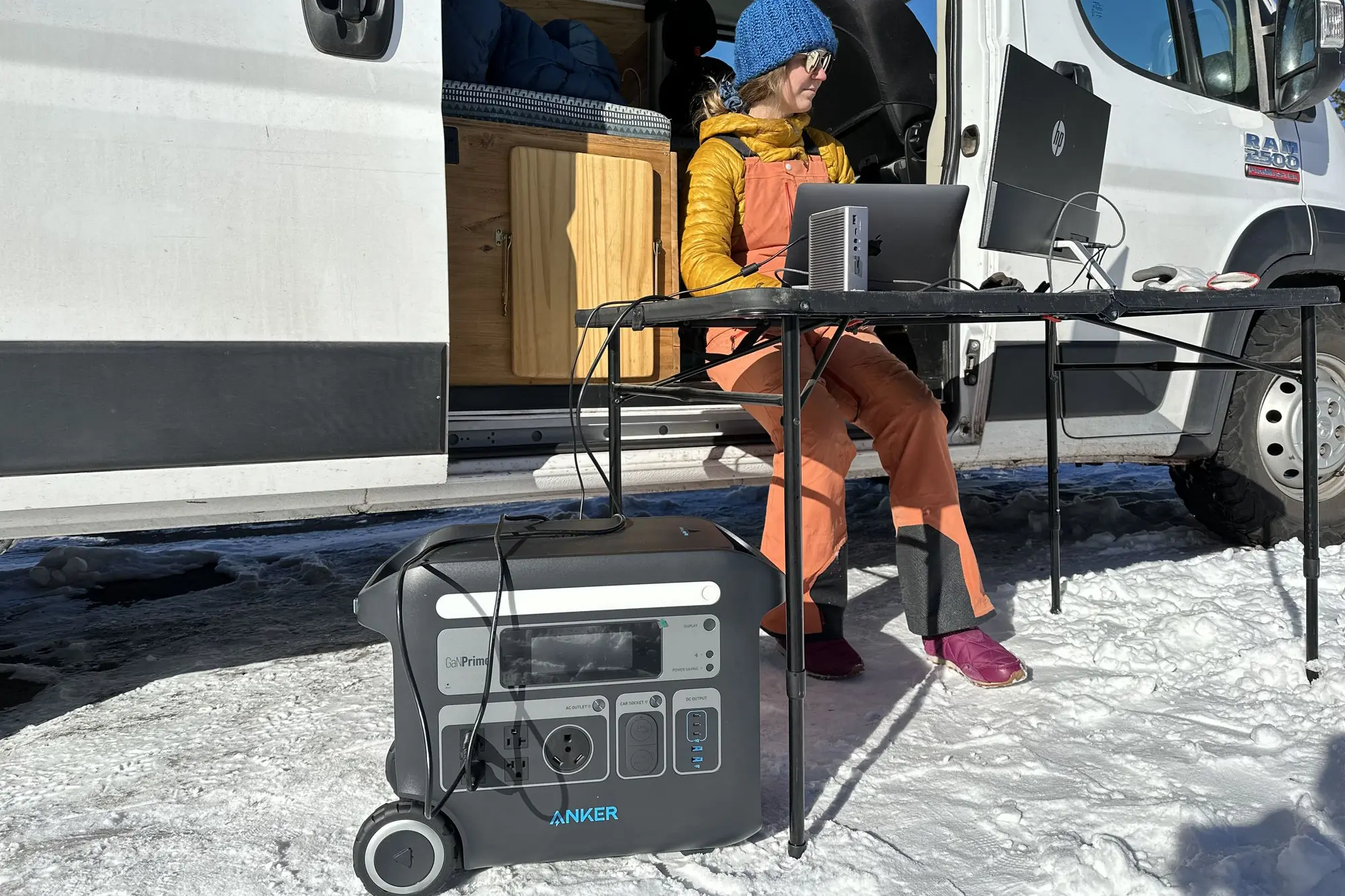



However, there’s a caveat: The above figures are direct calculations, but to properly asses your capacity needs, it’s wise to reduce the power station’s rated capacity by 25% — meaning plan on that 1,000Wh functionally providing you with just 750 Wh or making 15 cups of coffee instead of 20. That’s because in order to protect the battery, power stations don’t drain to absolute zero, so the usable capacity differs from the full capacity (you might see this gap referred to as the “efficiency” of the unit).
Another way to think of it is when you see 0% energy remaining on the display, your unit still has some watt-hours in it, but those aren’t available to you. Beyond that, power stations also consume energy through heat loss during operation and convert their DC current into the AC current that your household electronics require.
But you probably want to buy a power station that’s considerably larger than that 25% margin for a few other reasons:
- If you are relying on solar power, you need power reserves for cloudy and travel days.
- Once you have a power station, you’ll inevitably find more “necessities” to plug into it.
- Some power station manufacturers fudge the actual amount of watt hours, by basing their calculations off of different voltage rates.
- After you exceed the number of charges the unit is rated to, the battery capacity will be diminished, probably by about 20%.


Pro-tip: Don’t confuse Wh (watt-hours) with W (inverter watts). Some companies make it confusing by displaying the size of the built-in inverter in watts more prominently on the packaging or including the watt size of the inverter in the product name, which does not represent the actual battery capacity, but rather the size of the inverter (versus the Wh), which means you might end up buying a smaller Wh capacity unit than you meant to.
Also, a note about air conditioners: We know we aren’t alone with our dreams of running our portable AC off-grid in our vans on those muggy southeastern nights. Sorry, but that’s still mostly a pipe dream. Even though some power stations are capable of running ACs, you would likely need in excess of 10,000 Wh to run even the smallest of air conditioners through the night.
That being said, if you have enough space and money, you can actually make this happen with the Anker’s Solix F3800 Plus and Yeti Pro 4000, plus a couple of expansion batteries.
Inverter Size
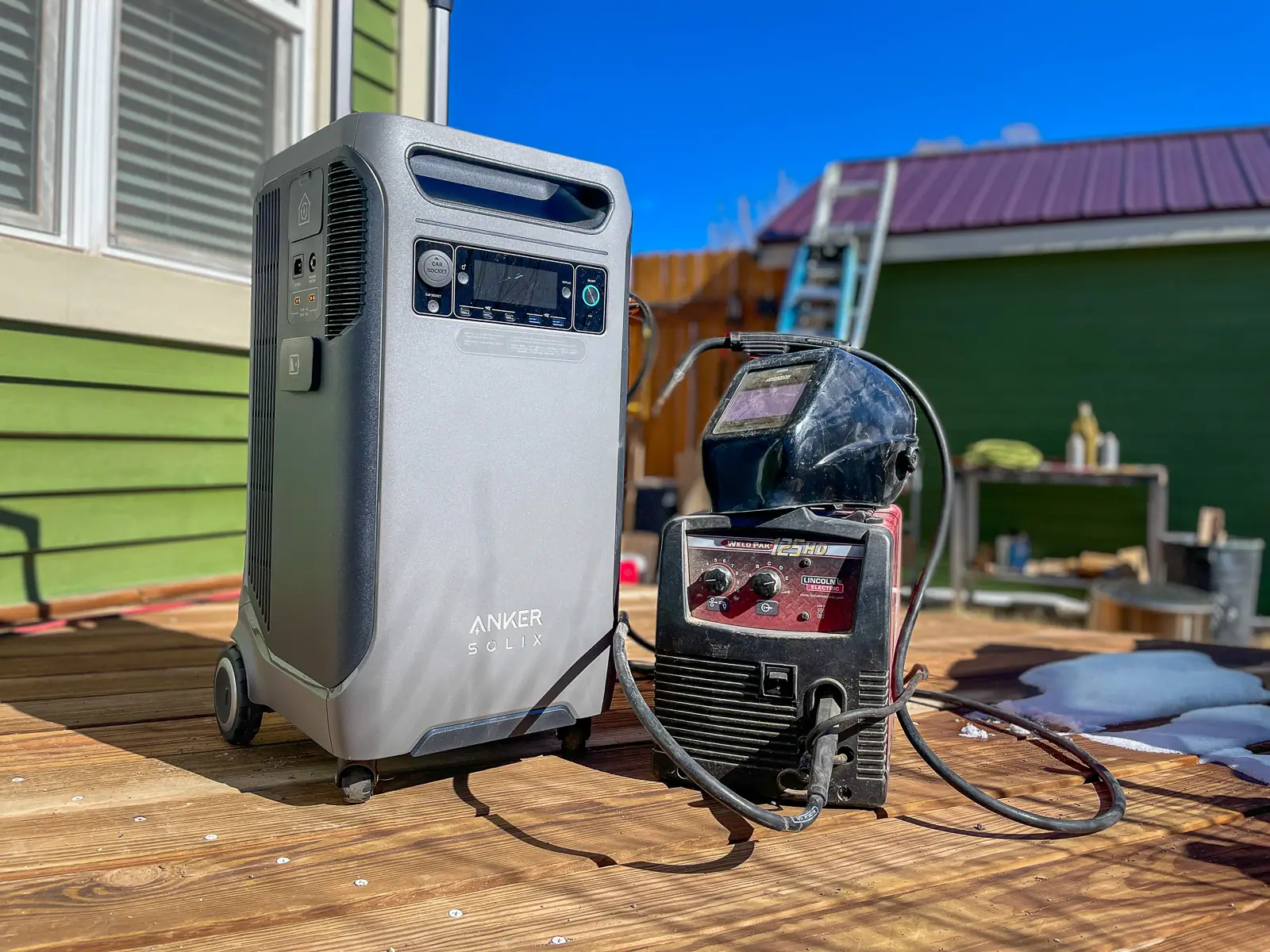



A power station’s inverter converts the battery’s DC electrical current into the AC current used to power 120V household appliances. Inverters are rated by constant capacity (in watts) and surge capacity. The constant capacity dictates what size appliance you can safely operate. For example, a laptop might use 60-100 W, whereas a toaster might use 1,100 W.
The surge capacity is what the inverter can handle during a temporary rush of electrical current, like what’s needed to turn on an air compressor. Every power station in this guide has a large enough inverter to power personal electronics. If you want something that can run most household appliances and home power tools, aim for at least a 2,000W continuous inverter.
When choosing inverter size, err on the upper end. Watt ratings are typically based on laboratory testing, which is performed under ideal conditions. But in the real world, factors like hot weather can lower inverter performance, plus regularly running it for long periods of time creates heat.
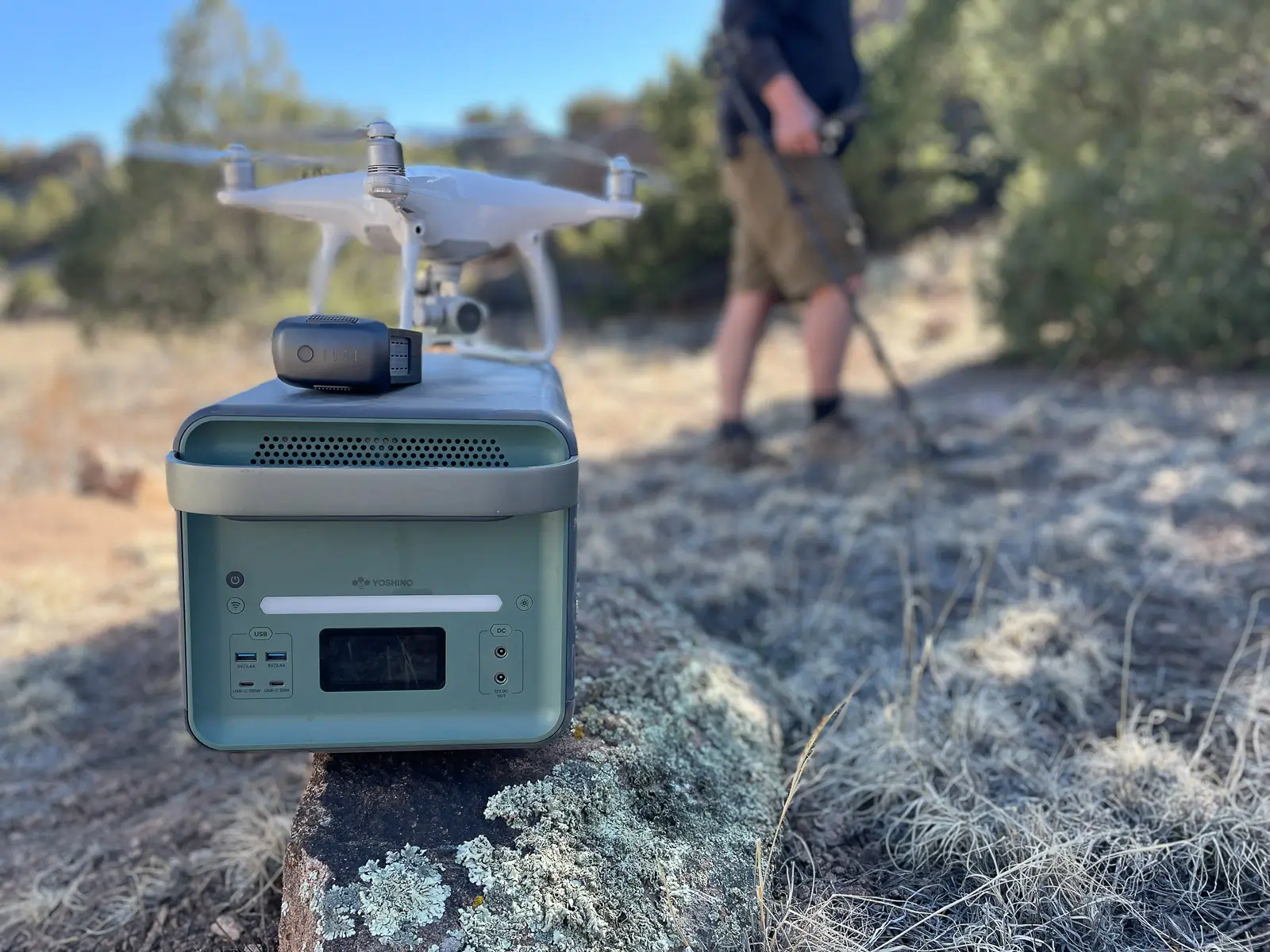



The more heat, the faster electric components will wear, and the shorter the lifespan will be. Our advice: get an inverter that’s 25% to 50% larger than the highest capacity appliance you want to run. Remember, if you want to run multiple appliances at once, you’ll need to add up their combined watts and then add 25-50% on top of that.
Three power stations of note that deliver higher-than-average watt and surge outputs for their size class are the Yoshino B4000 SST, the Anker’s Solix F3800 Plus, and Solix C1000, and EcoFlow’s River 3 Plus.
Also, make sure you’re buying a unit with a pure sine wave inverter, as those with modified sine wave inverters don’t work as well with TVs, laptops, and some other electronics. Most reputable brands, including all of the models on this list, use pure sine wave inverters.
Battery Chemistry
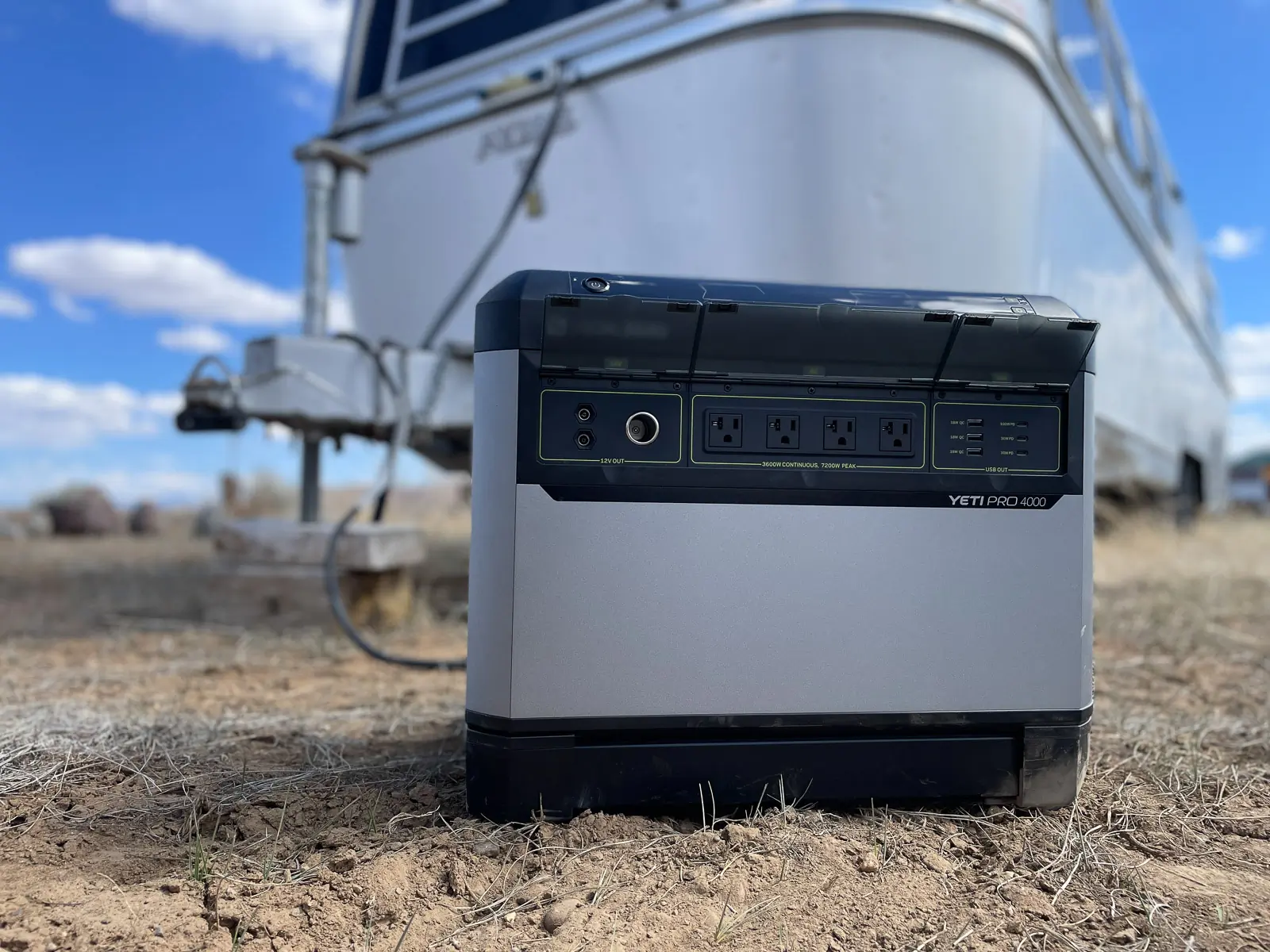



Nearly all power stations use lithium-ion batteries, although there are different chemistries among them that affect performance and safety.
LFP: As of 2024, the majority of reputable power station manufacturers use or are in the process of switching to LFP (or LiFePO4) battery chemistry. LFPs are very unlikely to have a thermal runaway and can retain their lifespan through 3,000 to 6,000 charge cycles (a charge cycle involves fully draining and recharging the battery).
NMC: Some manufacturers, including Goal Zero, BougeRV, Jackery, and Biolite, still use NMC (or LiNiMnCoO2) in some of their models (and Bluetti recently introduced the Elite 200 V2, which is also NMC), but we suspect they’re all in the process of transitioning over fully to LFP or other chemistries. NMC batteries are often slightly lighter than LFP because they have a higher energy density. But they have an increased chance of thermal runaway and a lifespan of just 500-ish cycles. This is not to say they are dangerous. Overall, they are considered safe (NMC is what’s used in most EVs), but they are more toxic for landfills.
Semi-Solid State: BougeRV just came out with the first semi-solid state battery in the power station game. Their Rover2000 is based on NCM technology (similar to NMC), but their semi-solid-state electrolytes drastically improve the safety factor, well above and beyond the previous generation NMC chemistry batteries.
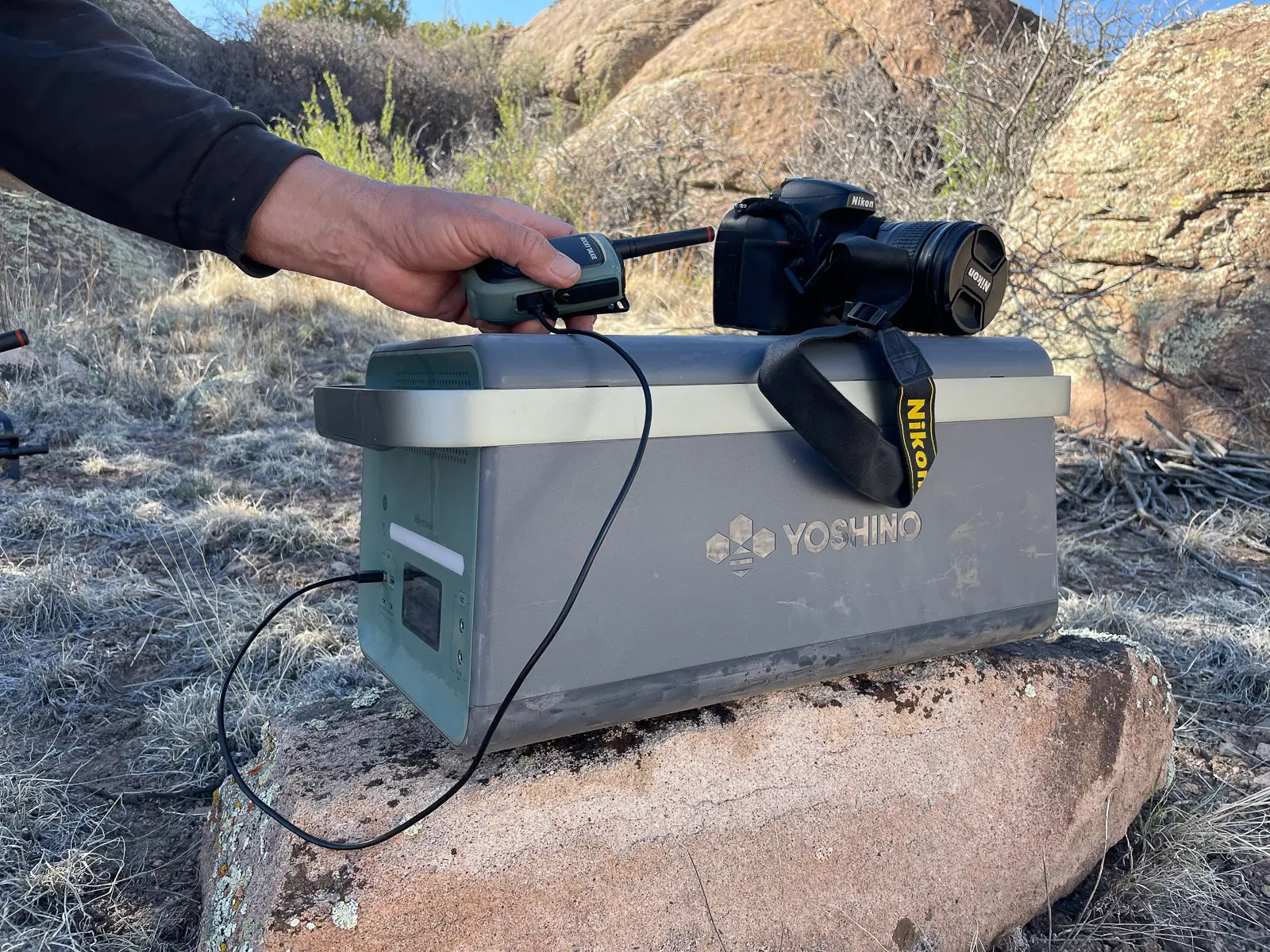



Solid-State: So far Yoshino is the only manufacturer offering solid-state technology. Unlike other battery chemistries, solid-states contain no liquid electrolytes, which makes thermal runaways nearly impossible, and thus a very safe battery. Solid state chemistry has tremendous potential to be the next generation of EV batteries. Yoshinos are also based on an NCM composition.
Lead Acid: We know of at least one company that is making power stations with lead acid battery technology. Hey, 1998 just faxed over a request to get their battery back. Steer clear! Lead acid is what your car battery is made from (unless you have an electric car, and then it’s NMC). Lead acid is at least three times the weight of lithium technologies. It can only be charged/discharged a few hundred times and run down to about 50% before the battery becomes damaged.
Charging Input Speed


Nearly all power stations can be recharged via three options:
- AC, from a wall outlet or gas-powered generator
- DC, from a 12-volt car lighter socket or a DC-DC converter installed in a vehicle
- Solar or wind power, which are technically DC as well
The speed of charging with any of these options can vary widely between brands and models, depending on the battery chemistry, wattage of the AC wall charger unit, and number of solar panels the power station will accept. If having a quick-recharge power station is important for you, look for models with higher rates of AC and/or solar input.
Pro tip: most power stations come preset in an eco/slow charging mode, which prolongs battery life and keeps fan noise to a minimum, so you’ll need to change that using their app to reach full charging speed.


Here’s also where manufacturer charging claims can get a bit blurry. Some base charging speed times on how long it takes to get from 0% to 100%. Others from 20% to 80%, or 0% to 80%. To prolong battery life, some units also have slow-charging modes and/or slow down the last 10-20% of each charge.
So, if you want to more accurately judge what a power station’s recharge capability is, divide the size of the unit by the input rate. For example, if a 2,000Wh unit has 1,000W input capacity, it will be mostly full in about two hours.
For wall charging, 1,800 W is as fast as you can get from a typical 15A wall outlet, and without a special cable, which is why that’s the top speed for most models, including the Yoshino Power B4000 SST.
BougeRV’s Rover2000 takes our slot for best solar generator, thanks to its 1,500 W of solar input (some larger models accept more, but Bouge’s input is particularly impressive for its size). This brings us to solar generators.
Solar Generators




Most companies sell power stations solo or as part of a “solar generator” package, which is just a fancy way of saying the unit comes with solar panels. If you want to charge up your power station via the sun, make sure the model you buy has high solar input capacity.
When it comes to calculating how many solar panels you need, in theory, you’d add up the watts of all of your solar panels, and that would equal the hourly charge rate — meaning two 200W panels would put 400W of stellar energy into your station every hour.
But that’s not exactly how it works. That’s because the wattage of a panel is based on perfect conditions, including a low air temperature, the angle of the sun being just right in the sky, and your ability to align them optimally to catch rays. On some panels, we’ve been able to achieve 100%. On others, no more than 80%.
We suspect this discrepancy could be caused by some manufacturers secretly oversizing panels (so a 100W panel is actually more like 120W), so customers can see a “100%” charging rate and feel satisfied. It could also be due to a handful of other things that are too tedious to test. Suffice it to say, when in doubt, buy a few more watts of solar panels than you think you need.




Now, before you get all giddy about all of the free power you’re going to get from your solar panels, we have to put on our fun police hats for a second. Solar charging sounds super, but in the real world, there are a few impracticalities to be aware of:
- If you’re using portable solar panels (vs. ones mounted on the roof of your vehicle), to get the most wattage out of them, you’ll need to reposition them every hour to maintain an optimal angle to the sun.
- If it’s windy, they will blow over — again and again.
- If you have a couple of cloudy days in a row, you might run out of power.
- If you have a tiny or shady campsite, they will not be feasible.
- If you’re tight on vehicle cargo space, you’ll be cursing them. They look all sleek and thin, but their bulk adds up pretty quickly, especially if you need more than 400W.
- If you’re camped in a place where you’re worried about stuff getting ripped off, you will end up not going for a hike or bike ride because you’ll be afraid to leave them set up unguarded.
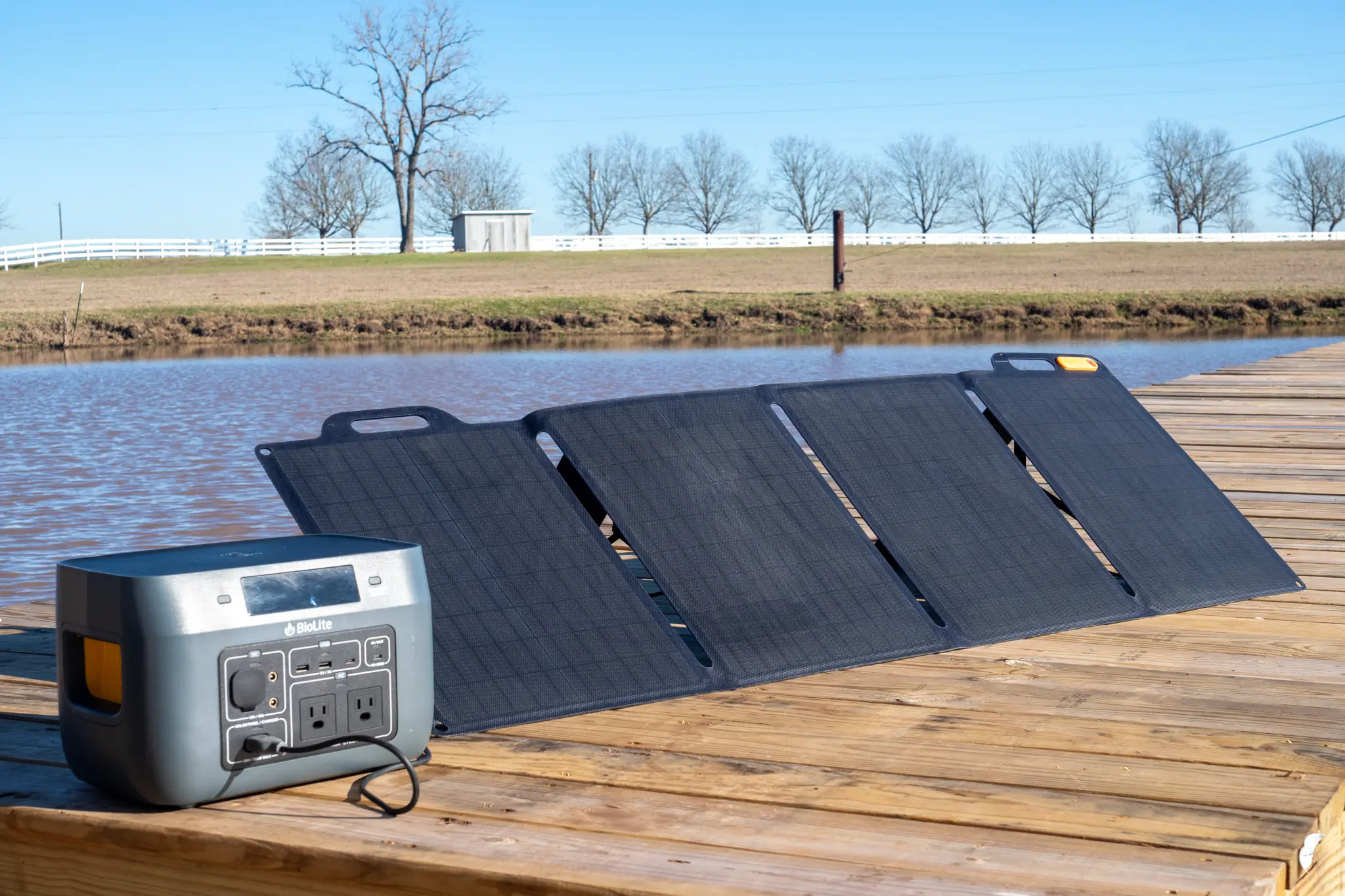



That said, we love using solar because it allows us the freedom to be away from civilization indefinitely while keeping luxuries like the electric cooler, laptops, shower, and mood lights running.
Finally, a note about buying solar panels: There are differences in panel technology that can affect how efficient they are. Most notably, there are several solar panels that will experience very little voltage loss, even when a small portion is shaded. These companies use bypass diodes to actually bypass the shaded section, which allows the rest of the panel to harvest the sun into electricity at normal efficiency.
Yoshino’s panels are some of the best we’ve seen when it comes to efficiency related to the stated wattage. We also particularly like BioLite’s compact 100-watt-ers. BougeRV has a nifty 100W solar blanket that folds down to the size of a record album. We also bought a Nice Solar 100W portable panel off of the internet for half to one-third of the cost of the brand names, and it works fine, too. For most situations, any panel will perform well enough, but ones that state higher efficiency, or efficiency even when partially shaded, will give you a little more juice for your dollar.
Receptacles and Outlets
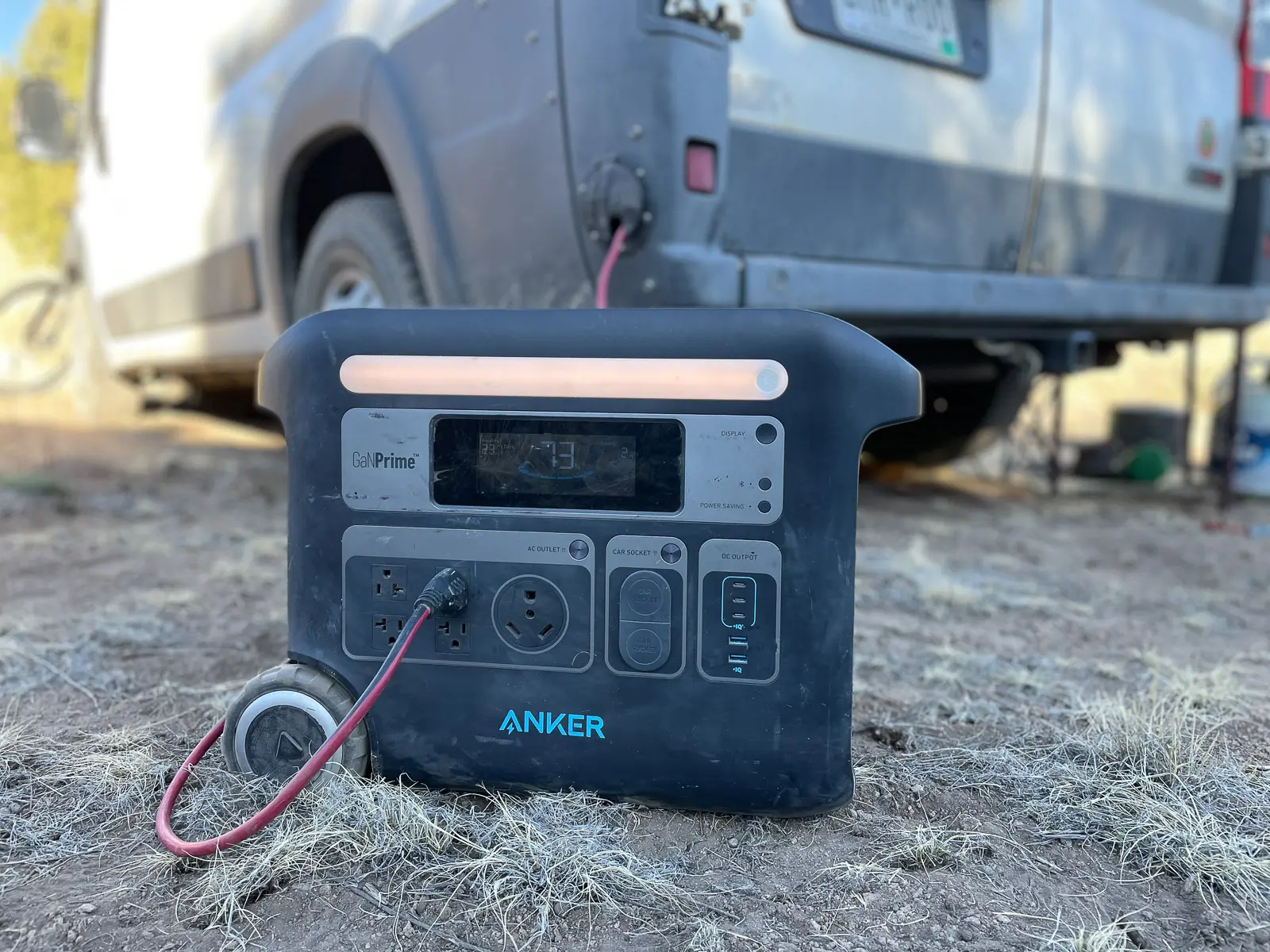



Nearly all power stations have AC outlets (like those on the wall in your house), a 12V car (lighter) socket, and USB-C and USB-A outlets. Most also have at least one USB-C PD outlet, which delivers more watts than a standard USB-C, so it can charge larger devices like laptops and power banks. Some also have 30-amp 120V AC outlets for RVs, and Anker’s F3800 Plus has a 240V outlet plus an EV outlet.
Most power stations have a button to activate the AC outlets and a button for the DC outlets. Keep the AC outlets off until you plan to use them, as just having that button engaged can draw several watts or more per hour from your power station. Also, be mindful that your power station will be limited by the maximum stated output and that plugging in multiple devices at once might exceed that draw and trip the internal breaker. Almost every power station today will incorporate some type of smart charging output, which will modulate the power based on the needs of the device being charged.
Some power stations, like the BioLite BaseCharge 1500 and Yoshino Power B4000 SST, incorporate Qi wireless charging surfaces on their exteriors. This eliminates outlets and cords and allows you to charge simply by placing a capable device atop the station. Slick.
Other Features
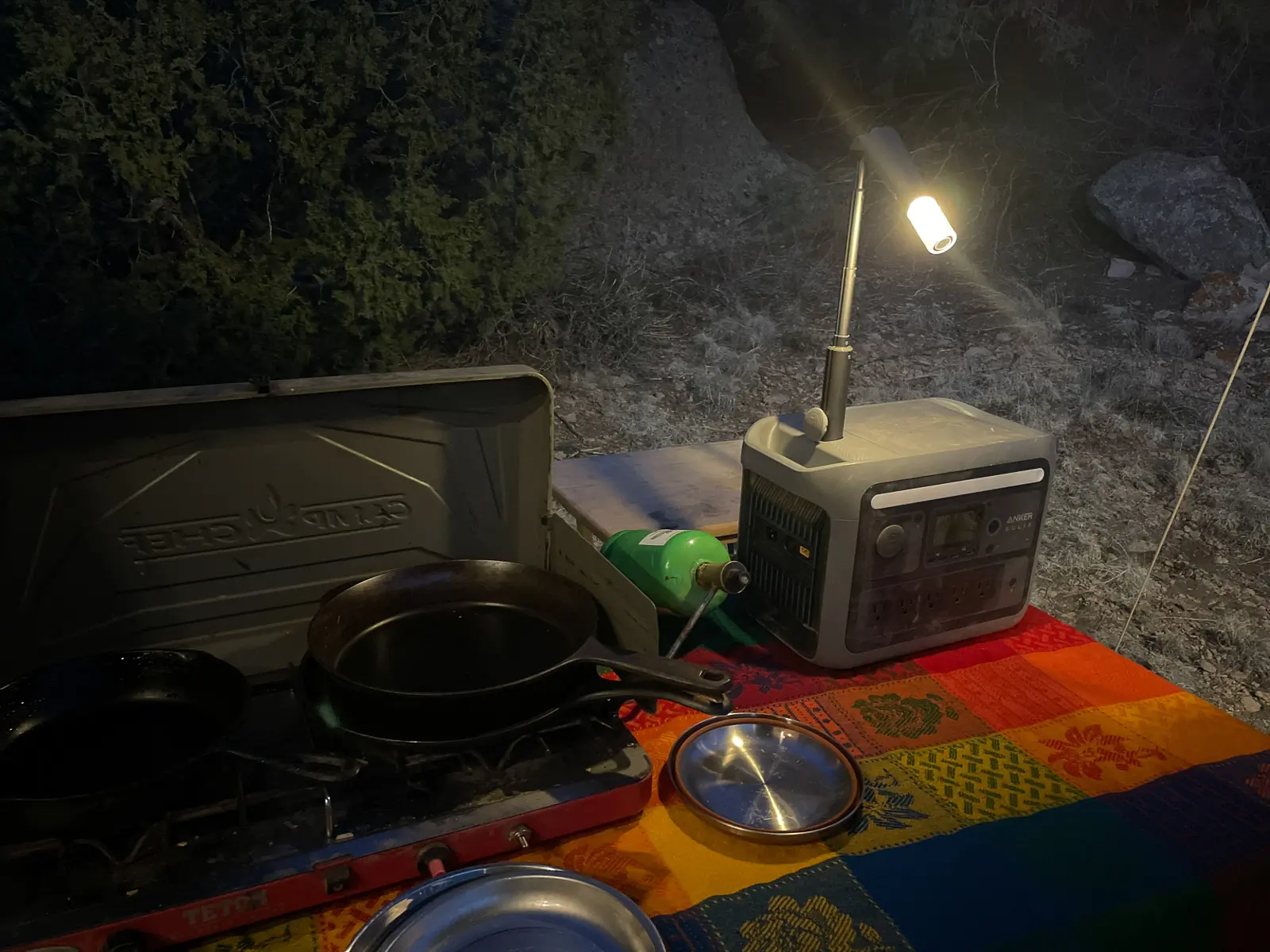



Apps and App Control
All of the power stations in this guide, except for the BioLite and DJI, can be controlled with smartphone apps. They’re good for checking that the system is running properly, tracking power usage, and switching to and from eco-mode. Over time, these apps will also track the performance trends of the battery input and outputs, as well as the health of the cells.
Portability and Weight
Look for ergonomic handles that can double as tie-downs for securing it in a vehicle. Some larger stations also have wheels and extendable pull handles. Anker’s Solix F2000 has the best wheels for dirt, and BougeRV makes a quality cart.
The power stations in this guide run from 6 to 137 pounds. Choose wisely to save your back. If you’re worried about being able to lift the amount of watt-hours you need, consider breaking it into bite-size pieces by buying an expandable unit with expansion batteries that can be carried separately from the main power station. The lightest unit in our review was the Anker Solix C300 DC at just over 6 pounds, and with a strap, it’s easy to carry anywhere you need it.
Middle-of-the-road units like the DJI Power 1000, Anker Solix C1000, and BioLite BaseCharge 1500 are still easy to single-person carry, but will require both arms to tote them around, as most weigh around 30 pounds. Adding on the battery capacity also adds on weight, and the Yoshino Power B4000 SST, Bluetti Elite 200 V2, and Anker Solix F2000 are nice to carry between two people over long distances.
The biggest units in our testing need their own wheels and handles, with the Goal Zero Yeti Pro 4000 weighing 115, and the Anker F3800 Plus a hefty 132. Thankfully, each of these carries well enough to be manageable by one person.
Expandability and Integration
Many models offer optional expansion batteries, which are handy if you outgrow your power station’s watt-hours. They’re also nice if you only need extra power sometimes, so you’re not lugging around extra weight when you don’t need to. More portable stations like the Bluetti Handsfree 2 Backpack Power Station or Goal Zero Yeti 300 are self-contained and won’t offer this functionality (with the exception of the EcoFlow River 3 Plus), while units meant for more stationary use or home support like the Anker F3800 Plus or Yoshino B4000 SST both are compatible with add-on battery packs.
Some of these expansion batteries are available in different sizes, such as the EcoFlow 286 Wh and 572 for the River 3 Plus, while the Anker BP3800 expansion battery for the F3800 Plus is only offered in one size. These batteries will need to be chained to the power station bases with a cord, and incredibly, some units like the F3800 Plus can support up to six additional batteries, bringing the total power storage to just under 30K Wh.
Larger power stations can double as home backup systems (Anker F3800, Goal Zero Pro 4000), and used to run either small or entire portions of your home. For true integration, you’ll need to buy a power panel kit and hire an electrician to install it. Goal Zero also has kits for van and camper integration, which are handy if you’re doing your own build.
Accessories
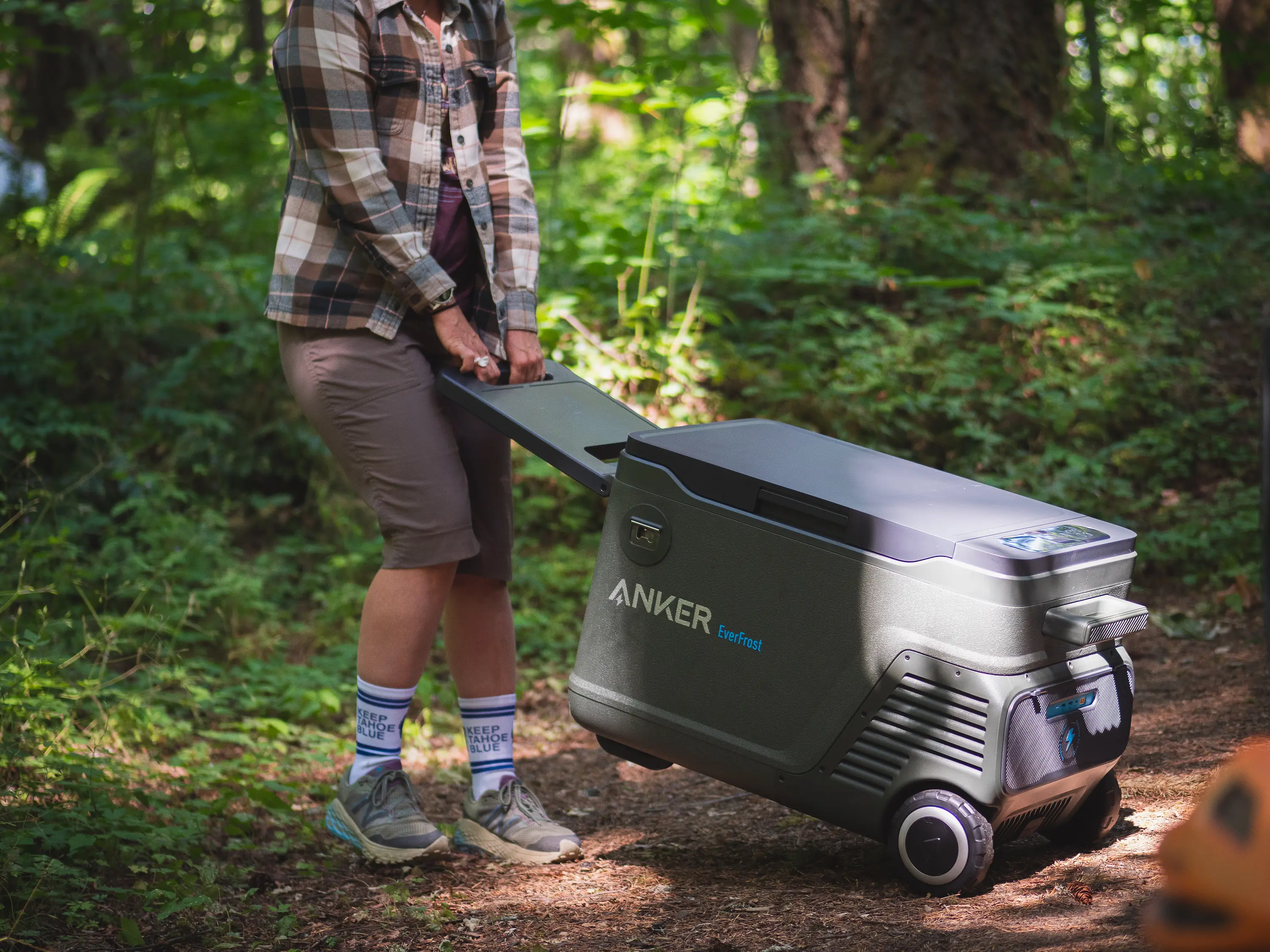



Some manufacturers offer accessory products like electric coolers (BougeRV, Anker, Goal Zero, Bluetti), lighting (Goal Zero, BioLite, BougeRV), and even electric griddles (BougeRV). Of course, you can mix and match accessories with brands, as they all use standard plugs.
One of the most common accessories is going to be a cord to connect to similar power stations in series, often times doubling your power output. Some portable power stations have a light bar built into the housing, which is useful for seeing at night. Anker’s Solix C300 also includes a pop-up camping light.
Final Portable Power Station Considerations
A few final words of advice if you’re about to become a power station parent — wait, parent? Yes. Power stations are not without hassle. They should not be stored or discharged/charged in extreme temperatures. In general, they should always be stored between 0 degrees F and 105 degrees F and never used (charged or discharged) below 32 degrees F, though that varies a bit by model and brand.
For example, if you live in Colorado, you can’t keep them in your unheated garage through the winter. They should also be charged to 60-80% every 3 months to a year, based on manufacturer recommendations. Finally, beware of using your power station near bodies of water, as it has plenty of current to cause injury if you are shocked.
Price & Value
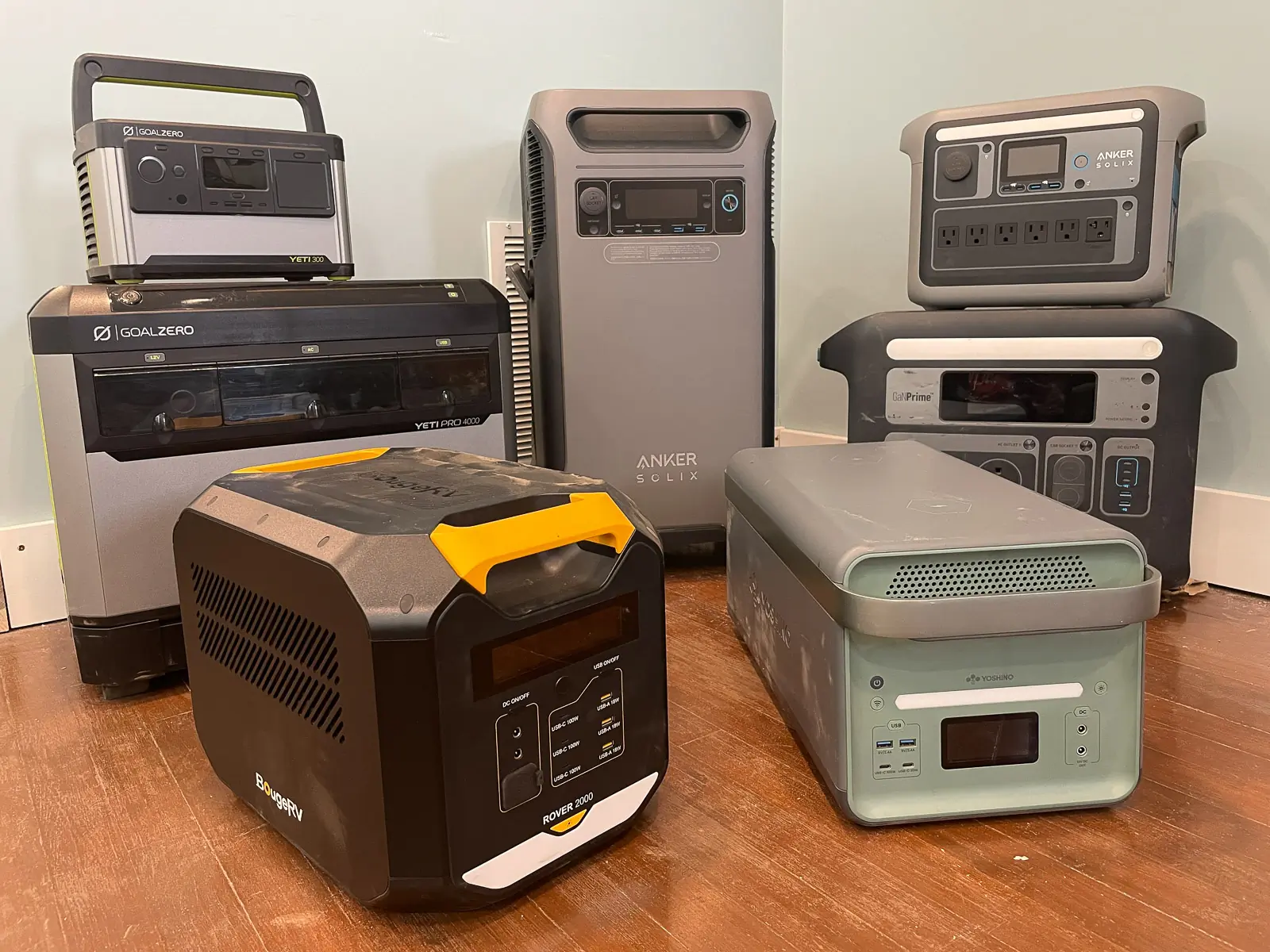



While prices vary between brands, in general, power stations cost about $1 per watt-hour. However, power stations are almost always on sale (or made to look this way). Just how much juice you’ll need can be a big deciding factor, but there are also other important metrics to consider: Charging rates can differ widely between the different inverters used, the number and types of outlets offered, and battery composition can all make a difference.
Budget
Smaller portable power stations might not be able to run your home when the grid goes down, but they can be plenty helpful on camping trips or remote work excursions. These typically will offer 300-600 Wh of juice and will put out close to the same figures in output watts. You’ll frequently see these units specced out with 2-3 AC plugs, as well as a mix of USB-C and USB-A plugs, and often a 12V car outlet, with the exception being the Anker Solix C300 DC, which has DC power only.
The EcoFlow River 3 Plus ($299) is our new best budget choice. The LiFePO4 battery composition is longer lasting than typical NMC types in this price range, and the 600W of output will keep your electronics topped off during weekend-long camping trips. The BougeRV JuiceGo ($209) offers an outstanding price for the ~240 Wh it ports around, and while the solar input is a bit low, the tradeoff in weight can be well worth it.
Mid-Tier
Bumping up to a mid-tier power station often nets enough juice to power an entire week or more off-grid (with thoughtful usage). These 1,000-2,000 Wh units will typically run you close to the $1 per Wh mark but will support larger inverters that can put out 2,400 W (with some surging up to 4,800 W). You’ll get access to a larger set of outlets in this range as well, with 30-amp three-prong and max-power PD USB-C outlets being standard.
The Anker Solix C1000 ($999) is just about the most even-keeled station we’ve put our hands on to date, and with a standard 1,056 Wh capacity that’s expandable to 2,112, you’ve got options. This price range also incorporates more robust solar charging capacities, and the 1,500 W input that the BougeRV Rover2000 ($1,999) can handle is well beyond most others in this space.
Premium
A premium power station is one that is primed to power a lot for a long time. These are often home-adjacent units that come with all of the capabilities to integrate into your own grid or form a mobile grid of their own in an RV. Stackable add-on power capacity is also prominent here, and if you’ve got the cash, you can easily double or triple the capacity of the station. Expect to pay north of $3,000 for the ability, however.
The 3,994 Wh of the Goal Zero Yeti Pro 4000 ($3,999) is about average in this realm, and that’s mated up to an equally impressive 3,600 W output that’ll keep home AC units humming for hours. The Yoshino Power B4000 SST ($3,299) is a little shy of this Wh number at 2,611, but its unique solid-state battery is cutting edge, and you’re paying for access to that tech.
Frequently Asked Questions
A power bank, or personal charging device, is smaller than a power station and used for powering small electronics, like phones and speakers. Power bank capacities are more often between 10,000 to 20,000 mAh, while power stations pack in between 300 to 3,000 Wh — a magnitude more. Portable power stations can also support additional expansion batteries, increasing their capacity even more.
Charging output on power banks are typically USB-A or USB-C ports, which can output up to 20V, or 100V if equipped with a “Power Delivery” USB-C port. Portable power stations offer many different outputs in addition to these, including AC outlets, 12V vehicle “cigarette” plugs, 30A 120V AC plugs, and more.
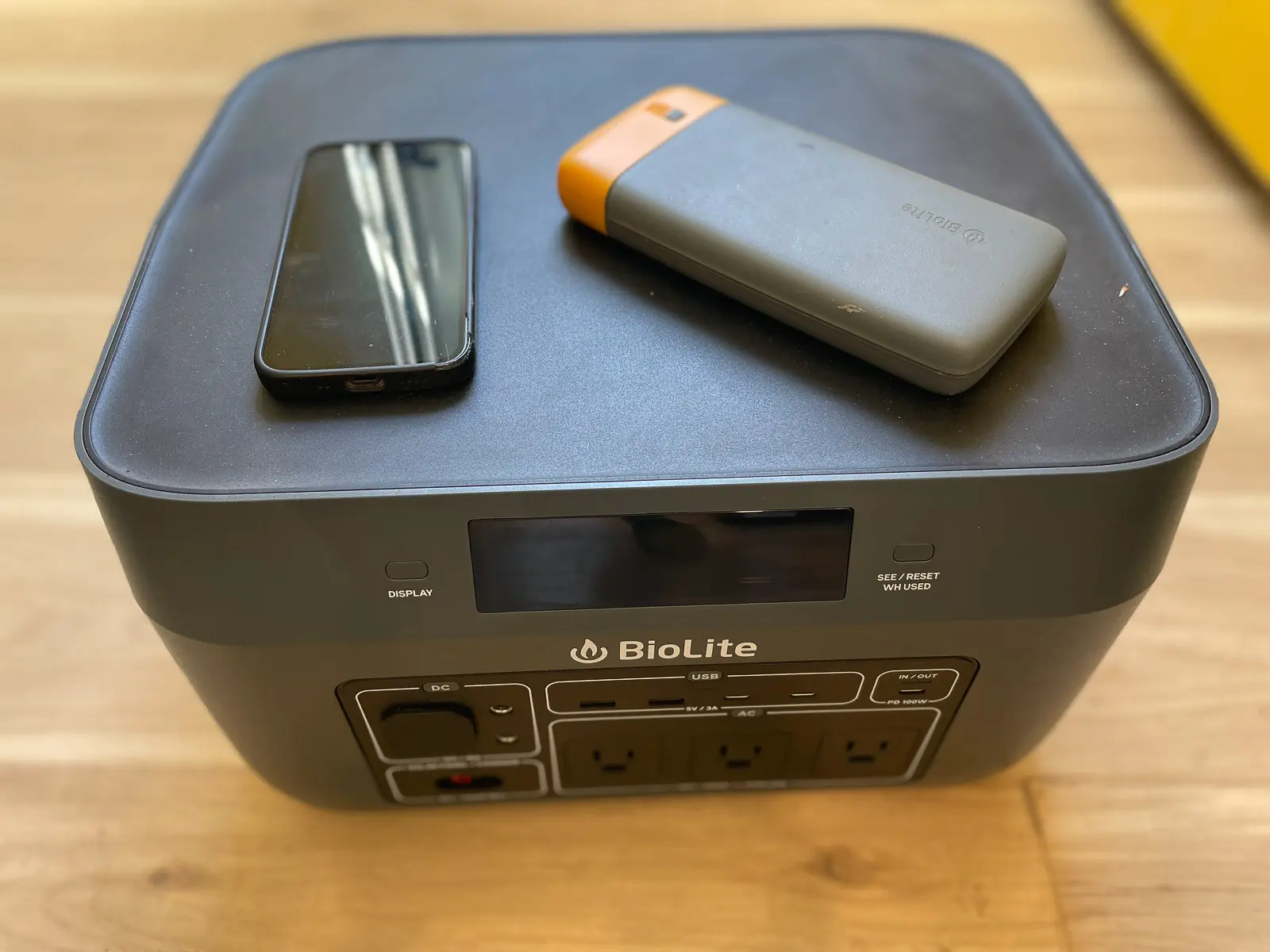



Yes, for most people. They are helpful for camping, road trips, remote work, and home power outages. Having a reserve of power that can recharge your gadgets can keep you outside longer and reduce your reliance on being near an electrical outlet. They are also a far cleaner and quieter alternative to gas generators and have much higher capacities than smaller power banks.
Portable power stations can power and charge electronic devices off the grid. They don’t burn fossil fuels, so they’re cleaner, quieter, and require minimal maintenance compared with gas- and diesel-powered generators. They can be recharged using solar panels and home electrical outlets.
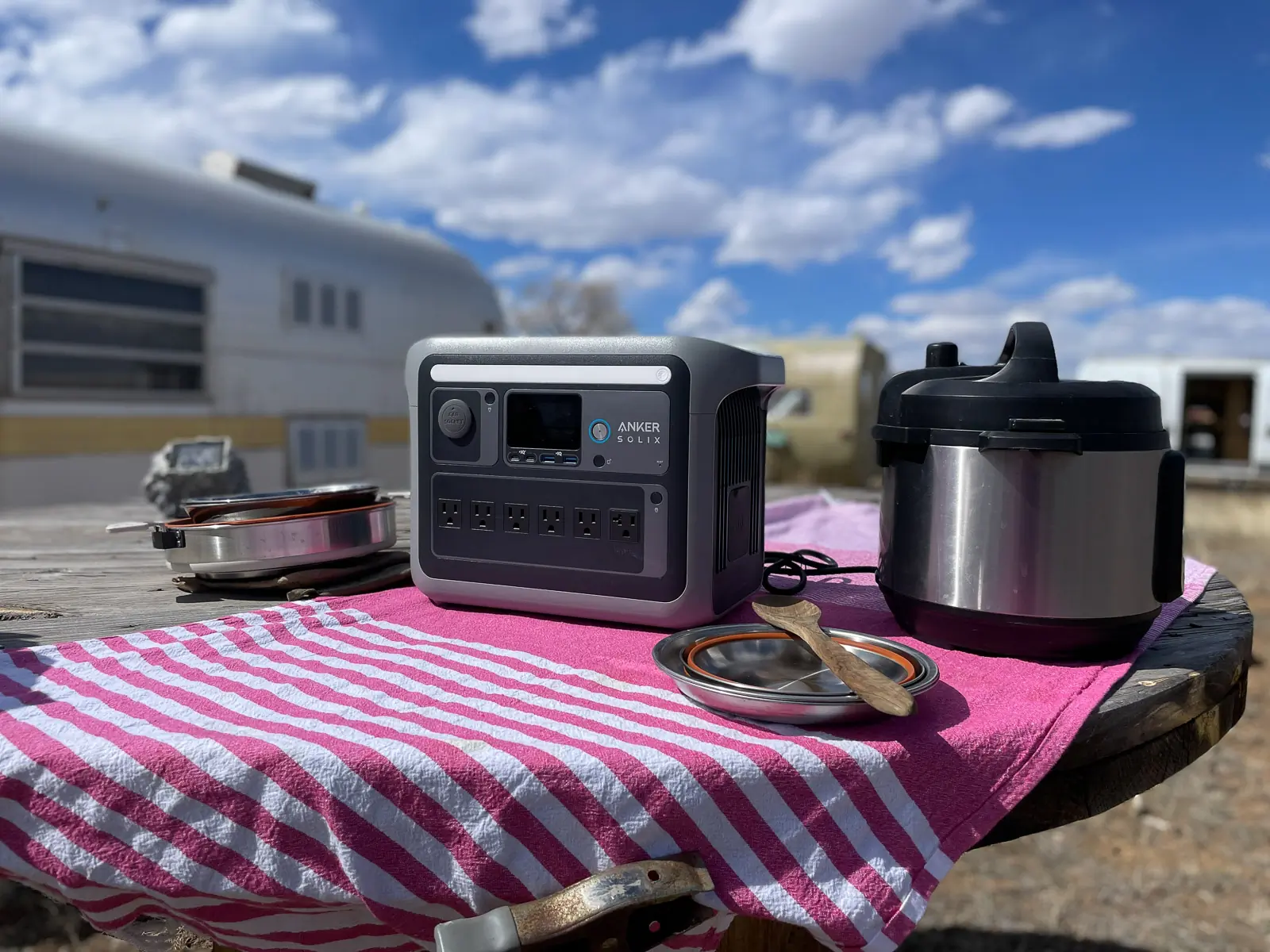



Large ones are heavy to lift. They can be damaged in extreme temperatures and humidity. Plus, they need to be disposed of properly, especially those with NMC battery chemistry, to avoid thermal runaways and toxicity in landfills.
A solar generator is just a portable power station, coupled with solar panels to re-charge it using the sun’s rays.
Yes. You don’t have to use solar panels made by the same manufacturer as your power station, but if you mix and match, you’ll probably run into a hassle with having to buy adaptors. Take note: you must also ensure the panels meet your power station input voltage specs. However, generic panels can also save you some serious cash.
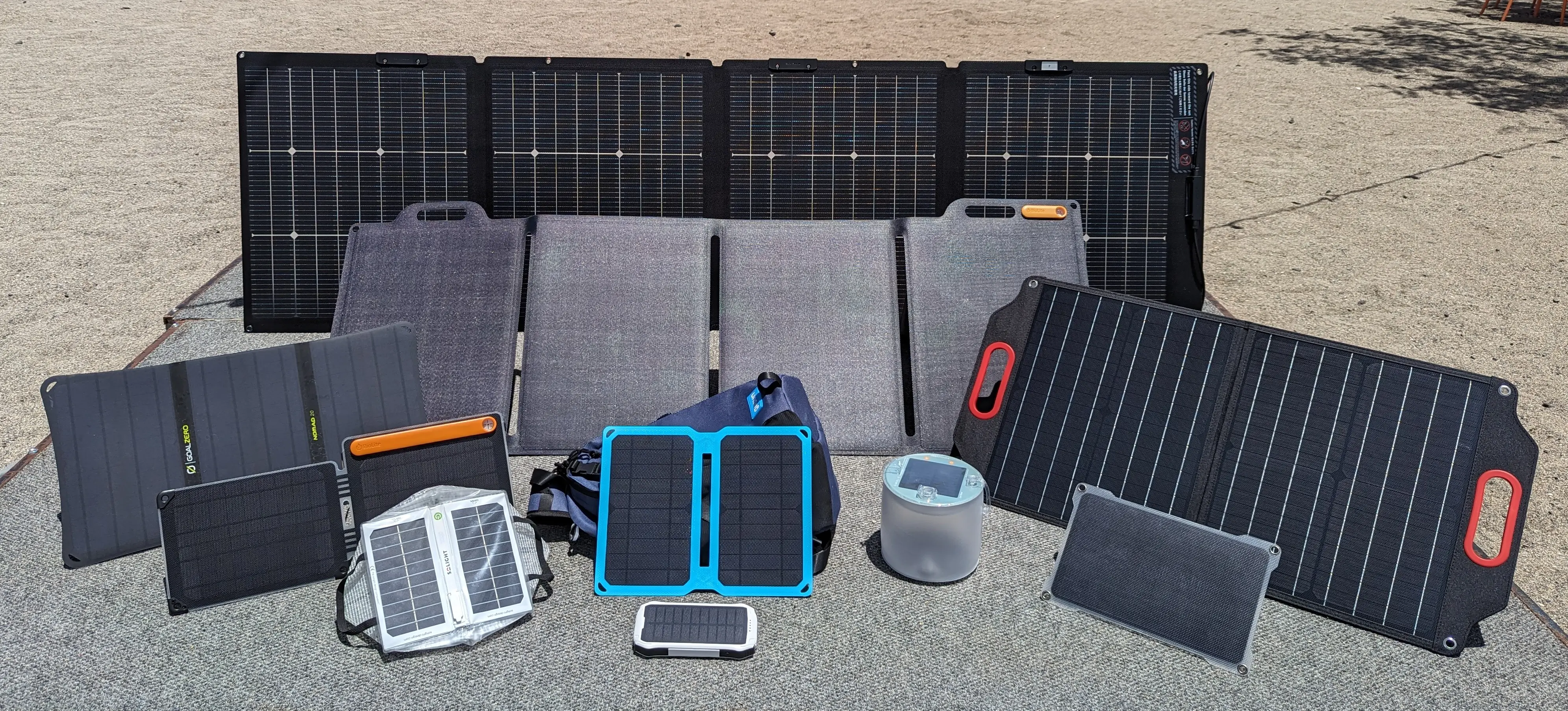

The Best Portable Solar Chargers of 2024
Portable solar chargers juice up devices off the grid and on the go. We tested the leading portable solar chargers to find the best of 2024.


The Best Power Banks of 2025
We tested power banks from Nestout, Anker, BioLite, Goal Zero, and more, to help you find the best model for your budget and needs.
